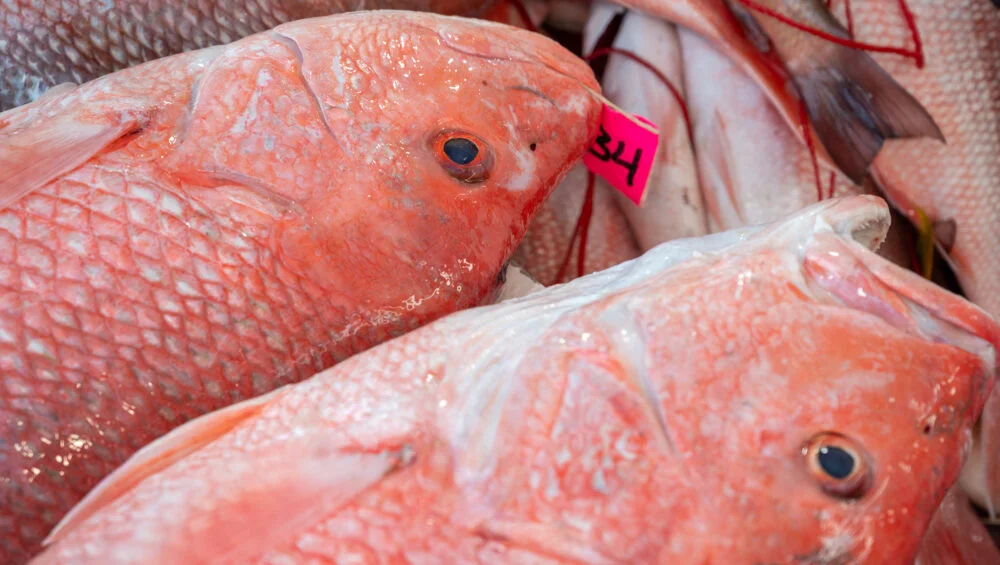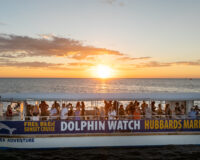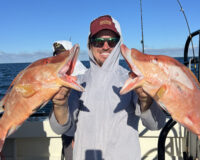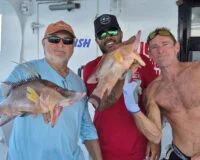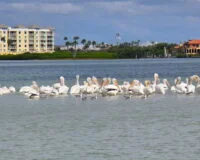Inshore Fishing Report
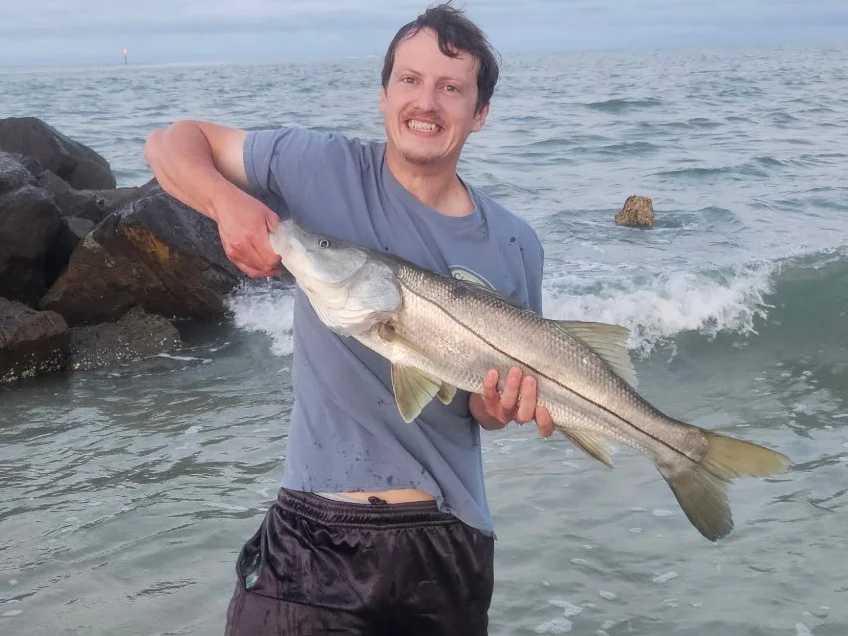
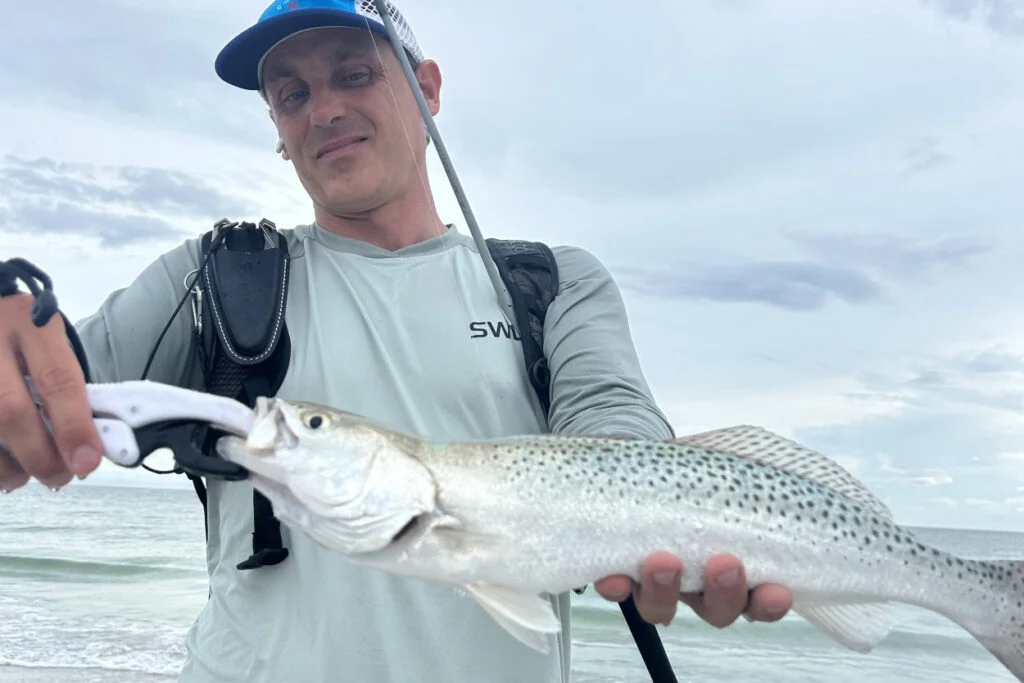
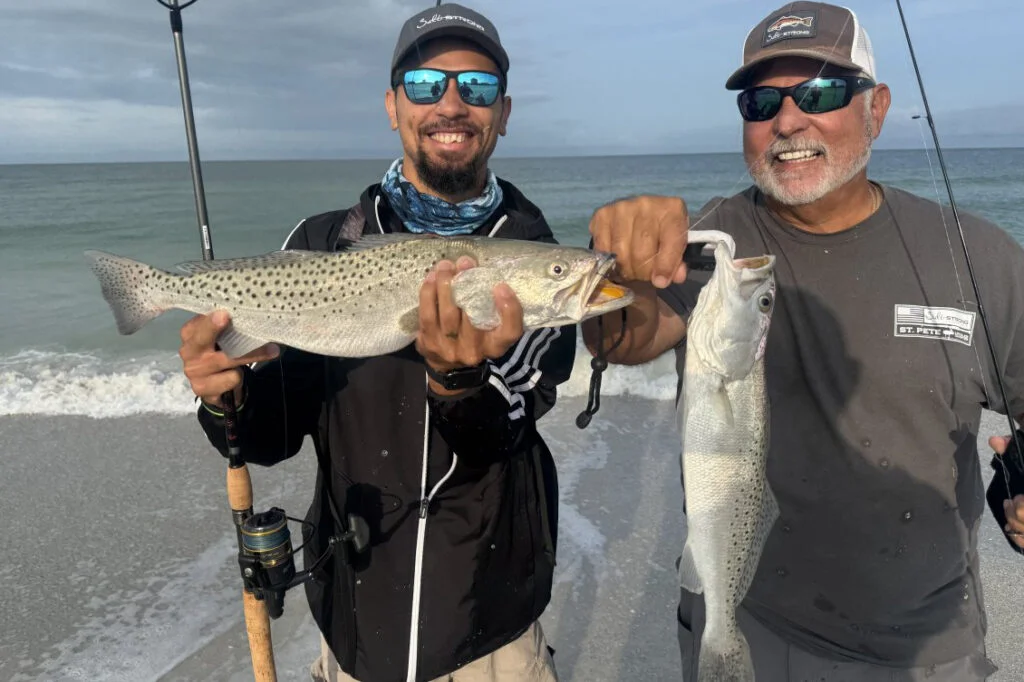

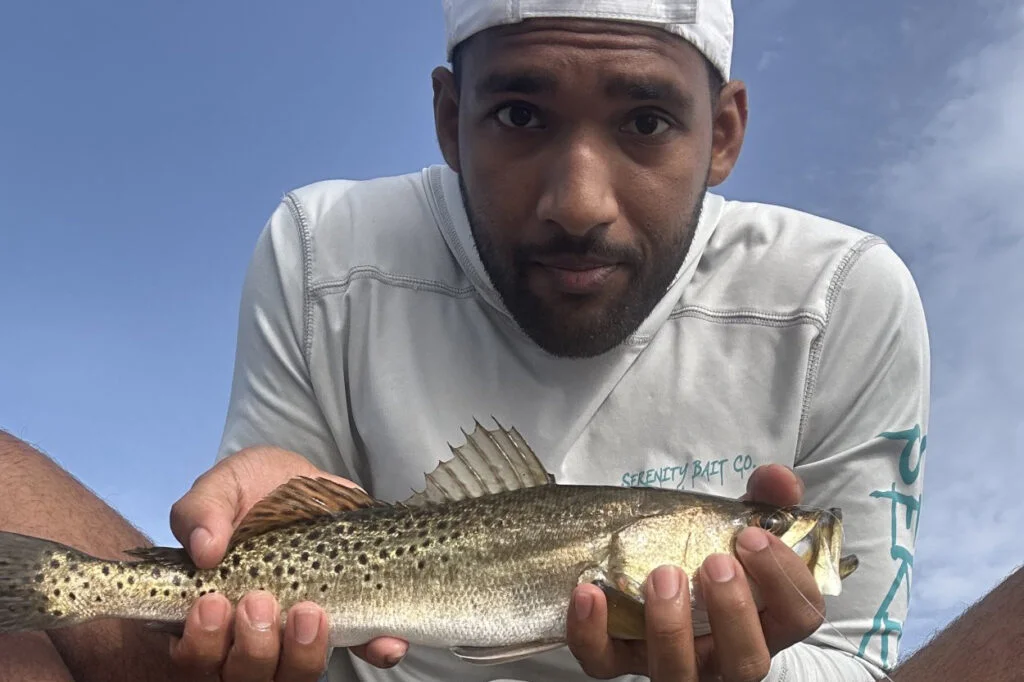
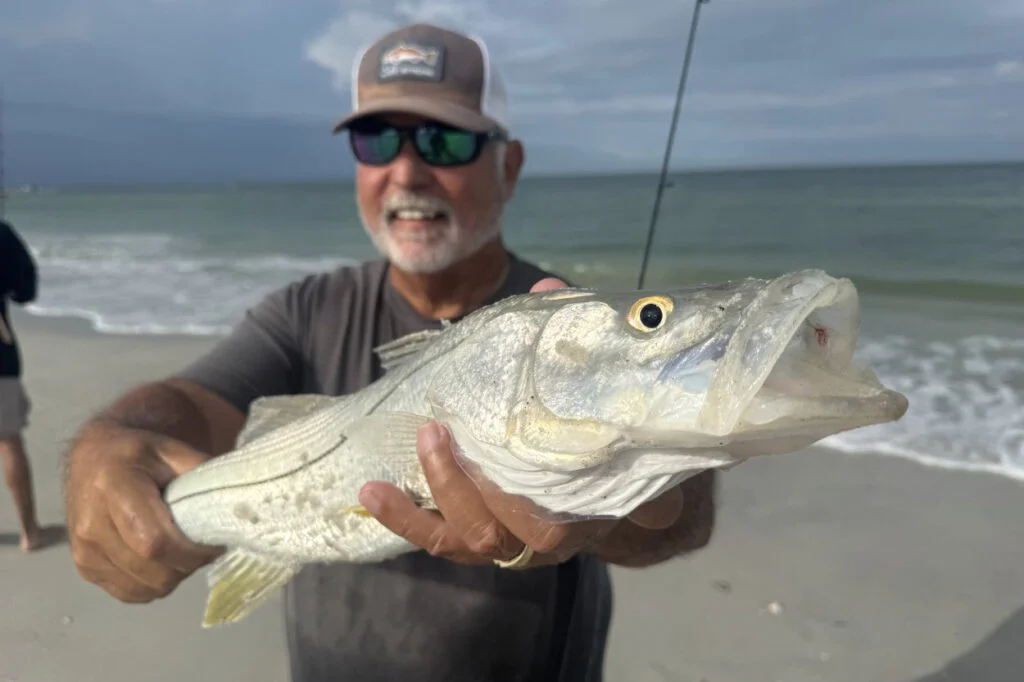
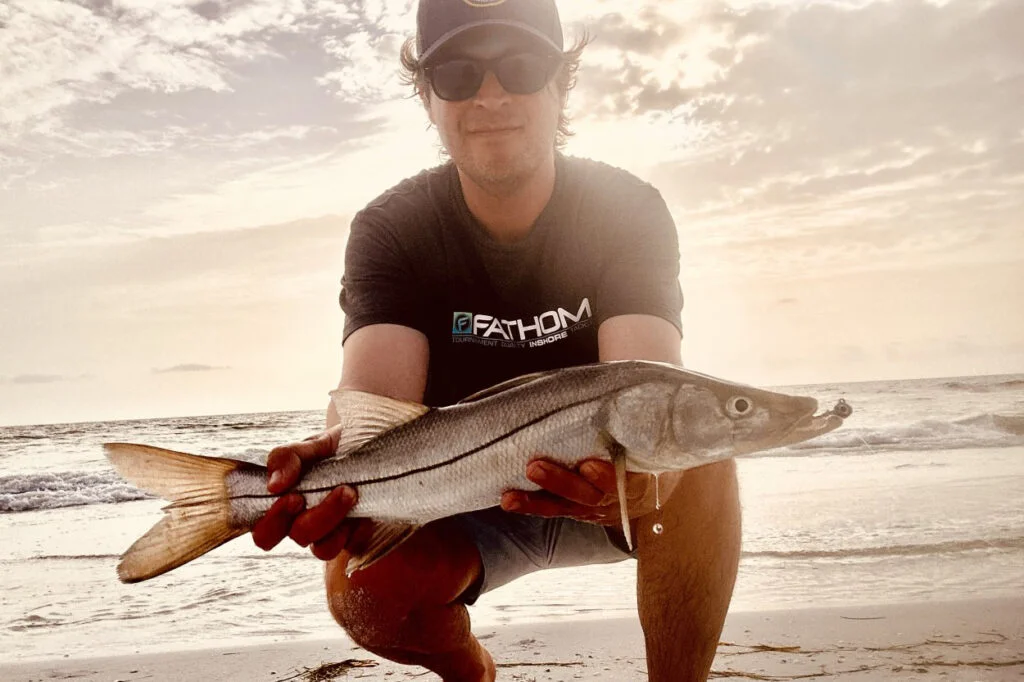

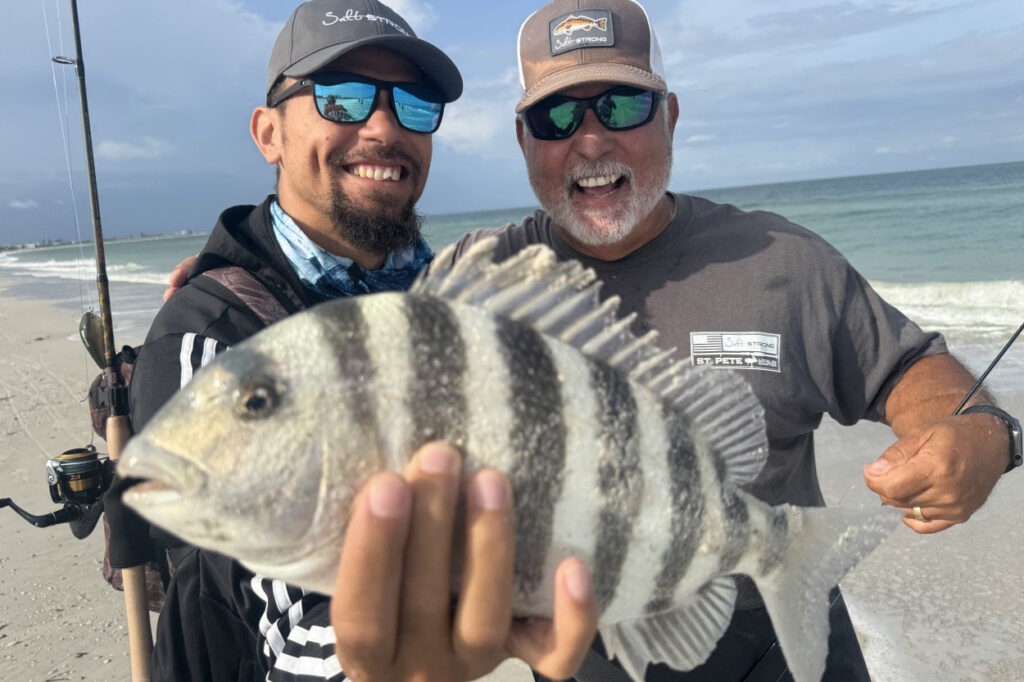


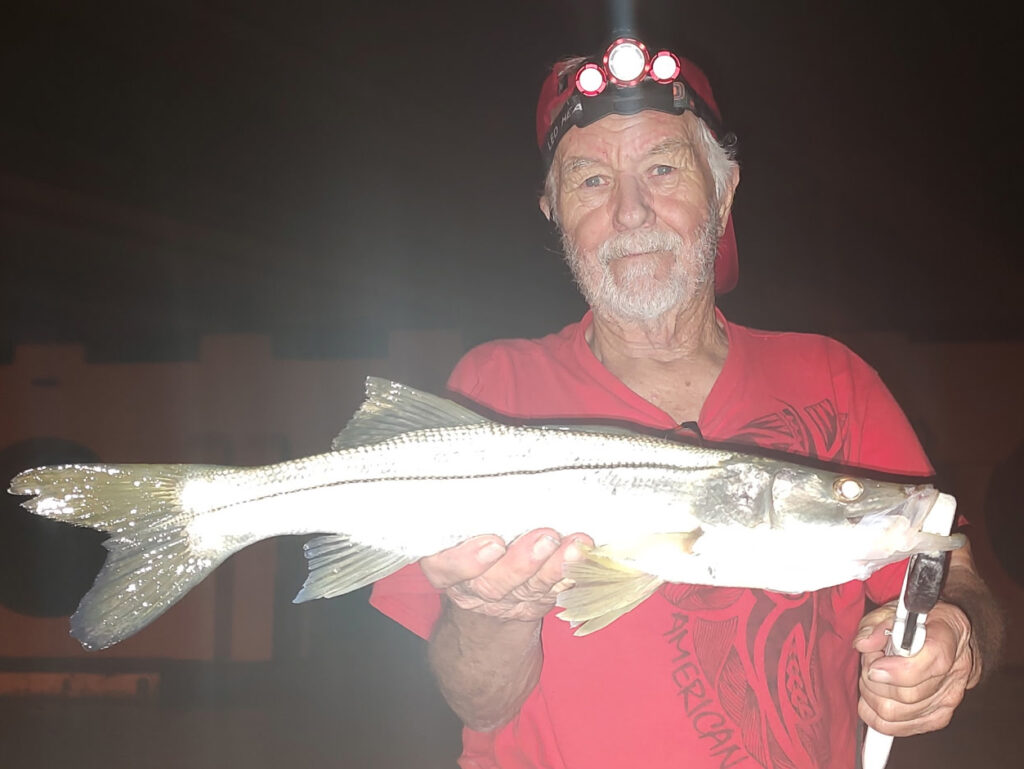
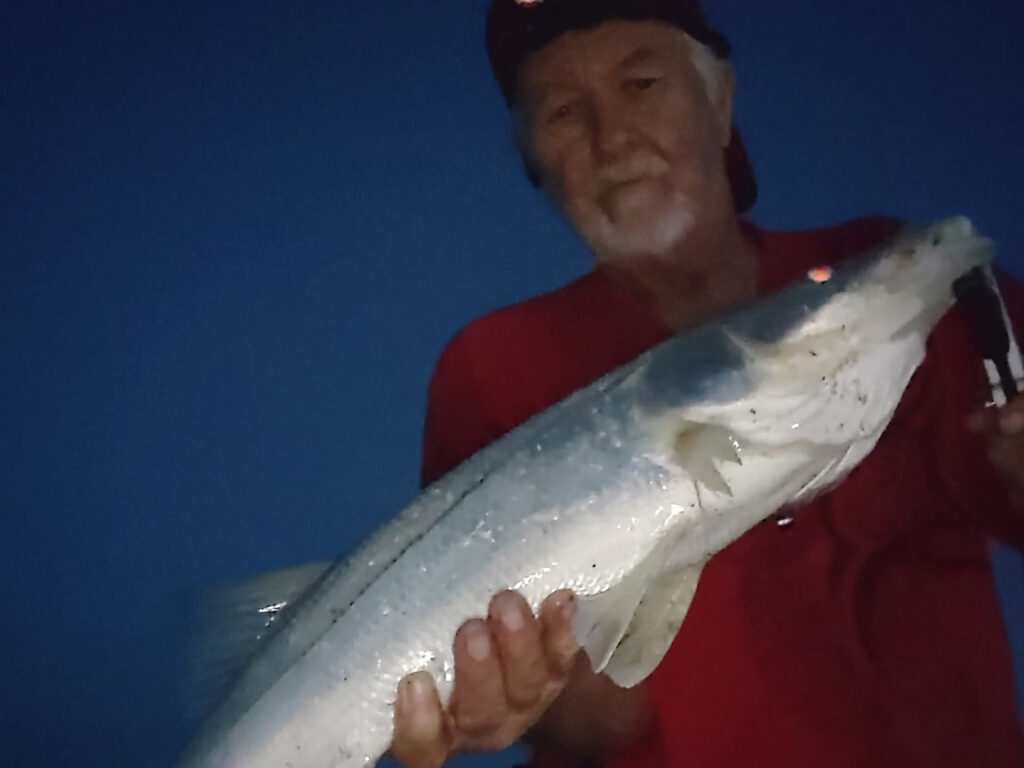
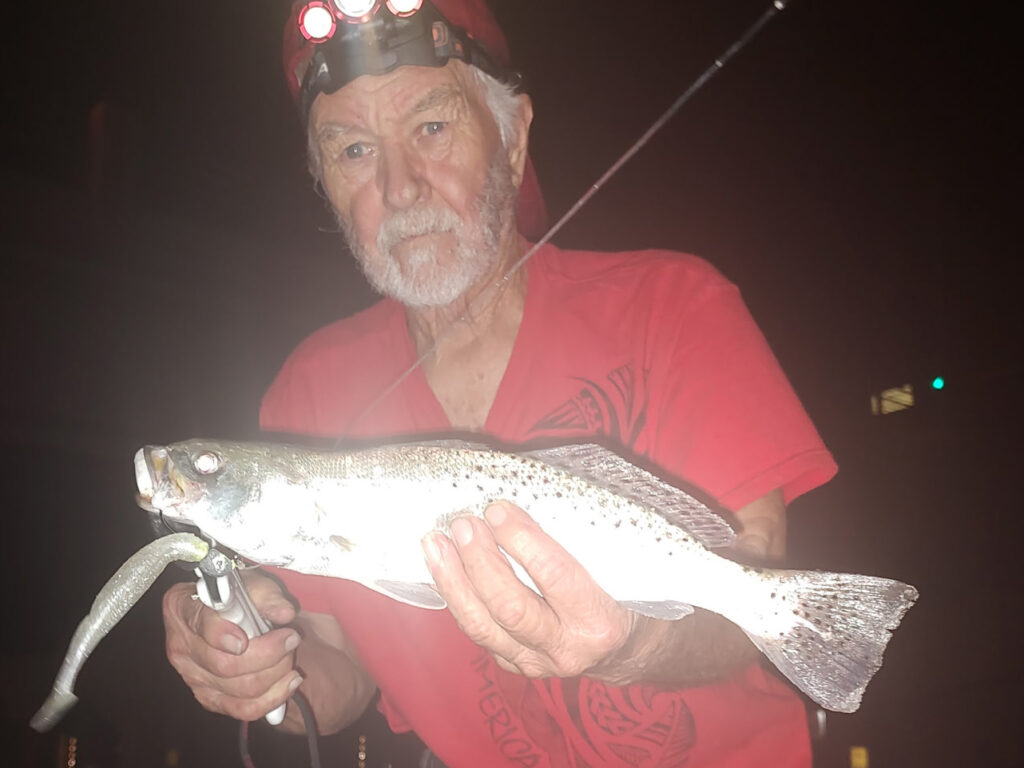
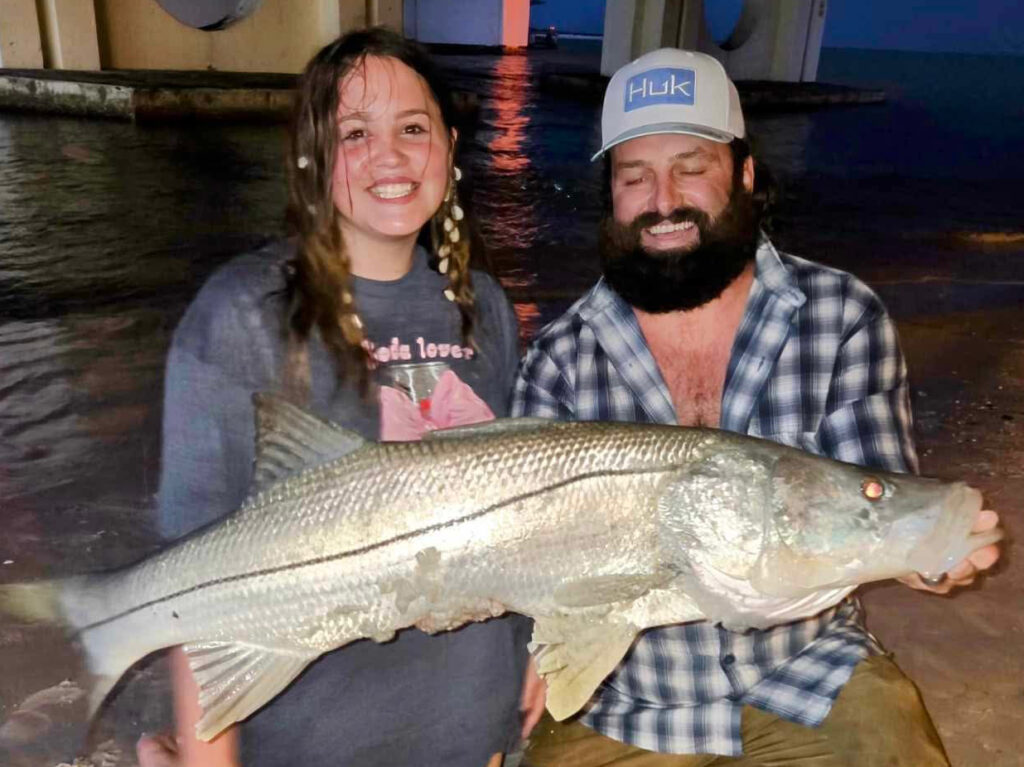
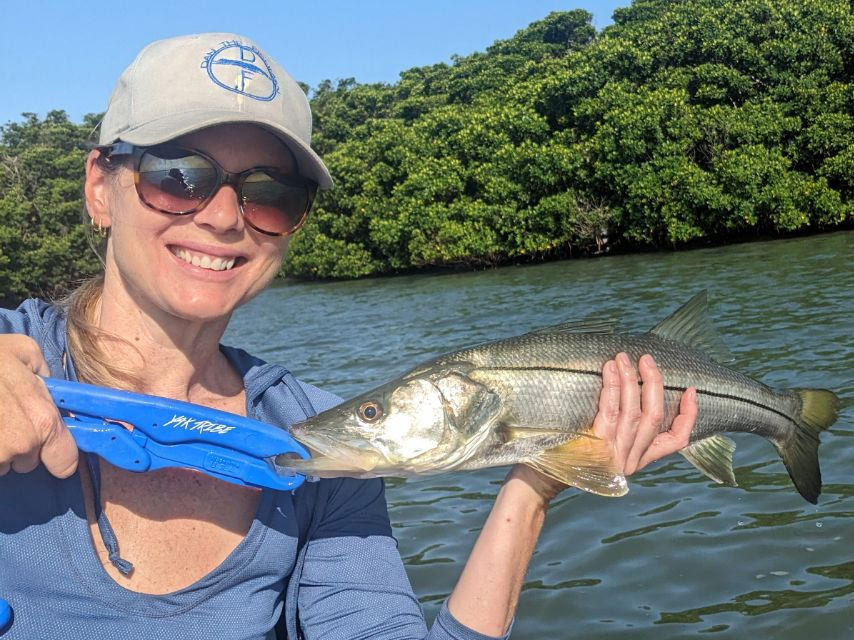
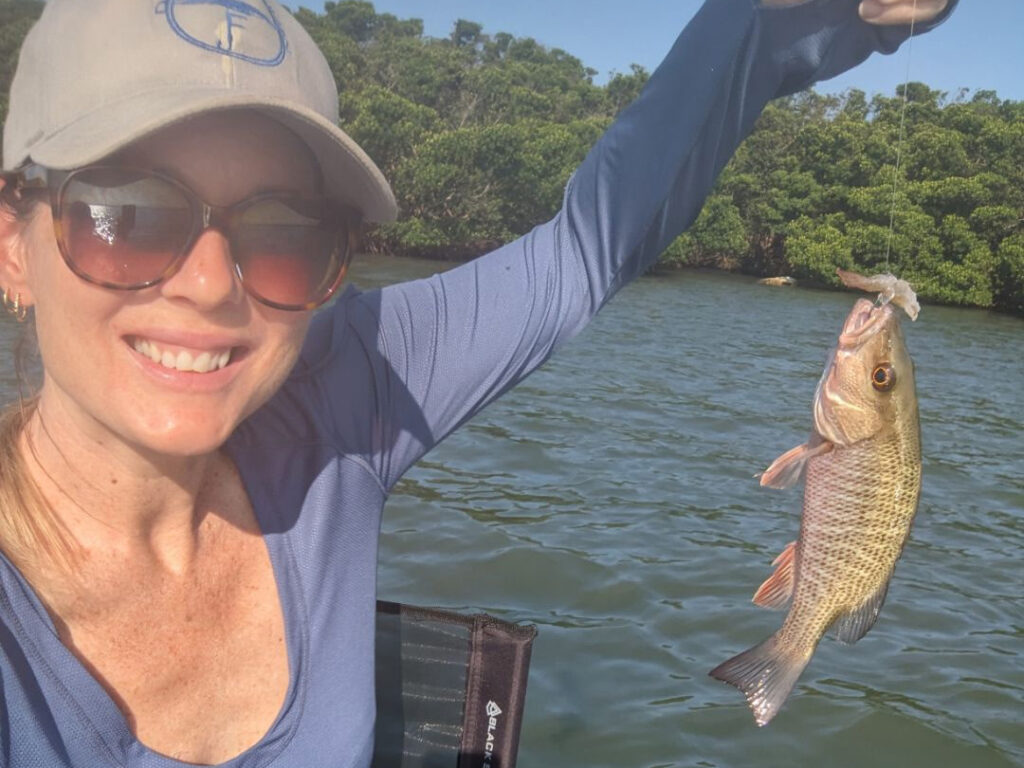
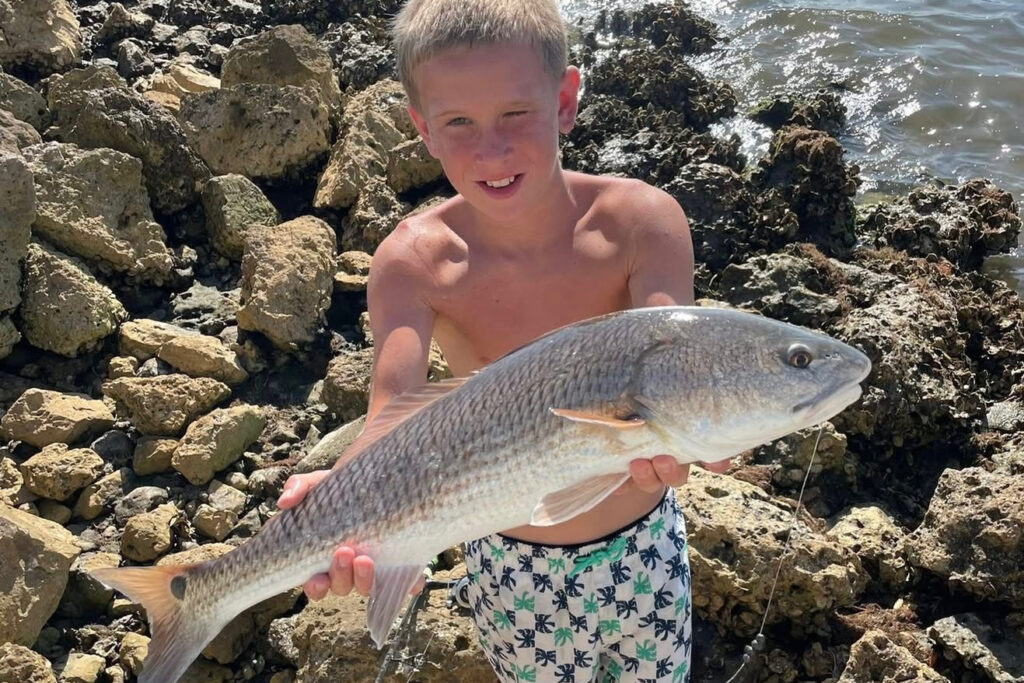
Snook are thick in the passes and along the beaches right now, taking full advantage of the bait flows pushed by strong tides.
Mangrove snapper are starting to stack up too, both in the passes and around bridges and dock lines. Virtually any hard structures are holding active mangrove snapper lately.
Redfish remain consistent, and anglers willing to fish deeper, shaded areas like under docks and mangrove points are finding some solid fish.
Trout action has slowed a bit with the heat, but you can still find them around deeper grass flats and tidal cuts with good moving water.
Flounder are spotty, but there’s a handful being caught around sandy drop-offs and edges near hard structure.
Pompano are popping up, especially around jetty points and beach troughs.
Tarpon are everywhere right now—rolling in the passes, cruising along the beaches, and staging near bridges.
Spanish mackerel are thick inshore, and sharks are hot on their heels with everything from blacktips to bull sharks showing up in strong numbers.
Fishing Tips
- Snook: Use live baits like greenbacks, threadfins, and shrimp, or try flair hawks and soft plastics at night.
- Redfish: Look for them around mangroves, oyster bars, and flats, and use dead baits during higher tides.
- Trout: Target them with soft plastics, white bait, and shrimp around deeper flats and potholes.
- Tarpon: Target them during the full moon with crab flushes, making it an ideal time to target them.
- Flounder: Find them near sandy bottoms and structures, biting on bottom baits.
- Pompano: Be prepared to move frequently to stay on their bite.
- Sharks: Use big dead baits in areas with moving water.
Help spread the word about what to do if you hook or entangle a bird. Never cut the line; instead, reel in the bird carefully to dehook and release it. If you accidentally hook a dock, break the line at the hook to avoid leaving any line in the water. Seabirds with fishing lines hanging from them are becoming more common, and this could lead to the closure of fishing areas.
Rising concerns about bird entanglements might result in closing fishing spots, impacting the few available locations around Tampa Bay from shorelines, docks, bridges, or piers. Learn more in our recent podcast with Salt Strong: https://www.saltstrong.com/articles/shutting-down-fishing-at-busy-pier/.
NEarshore Fishing Report
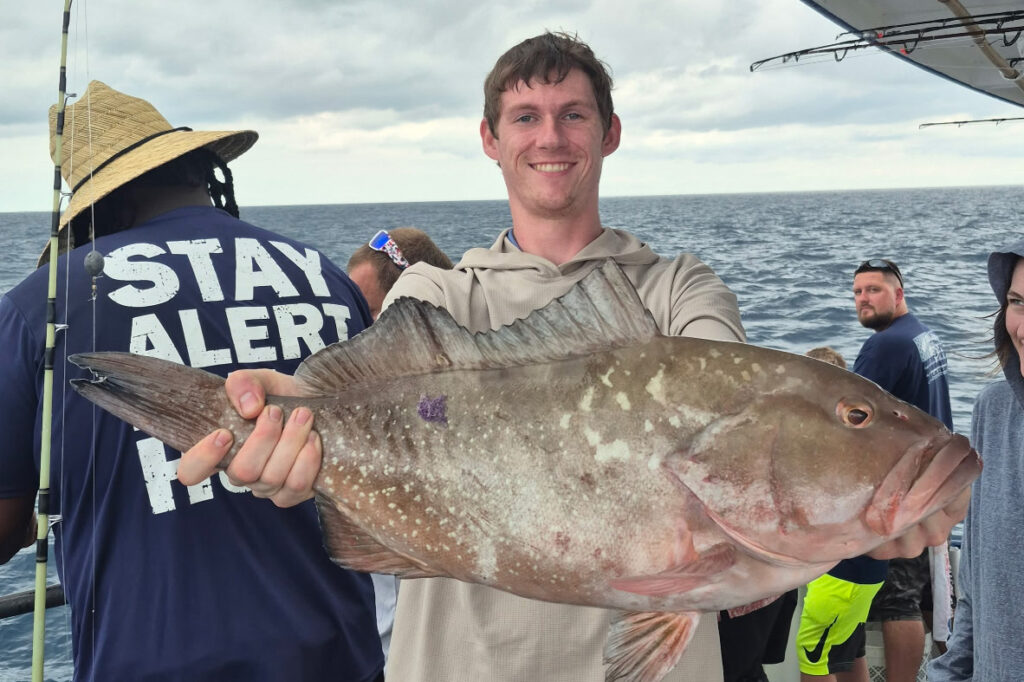
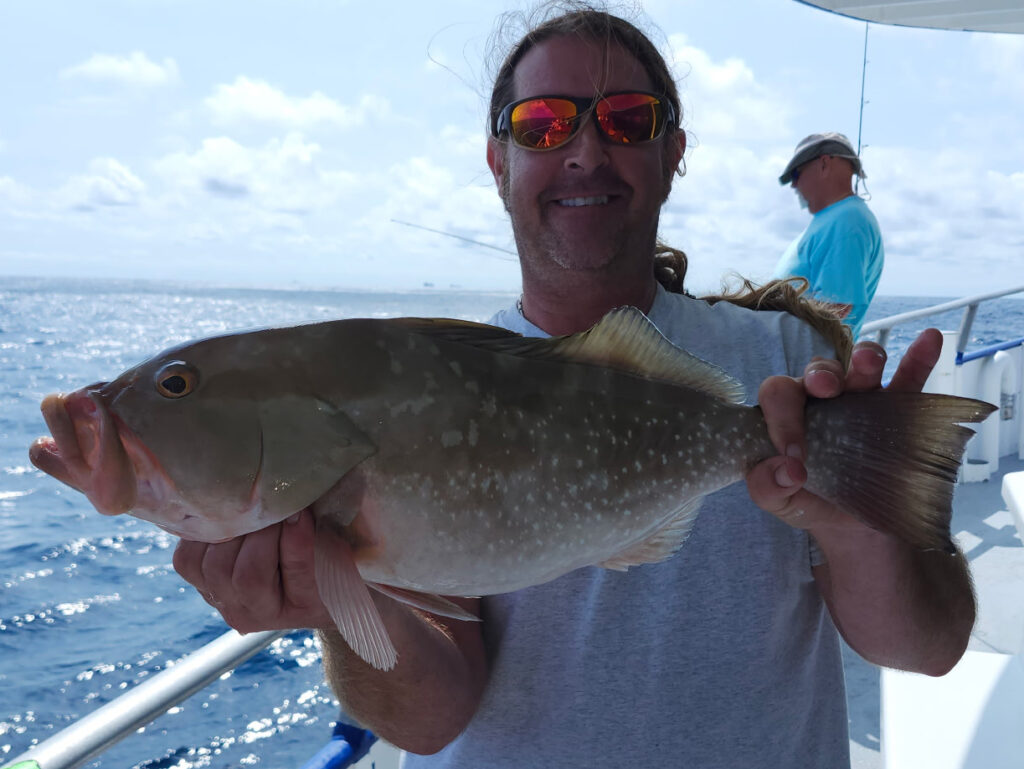
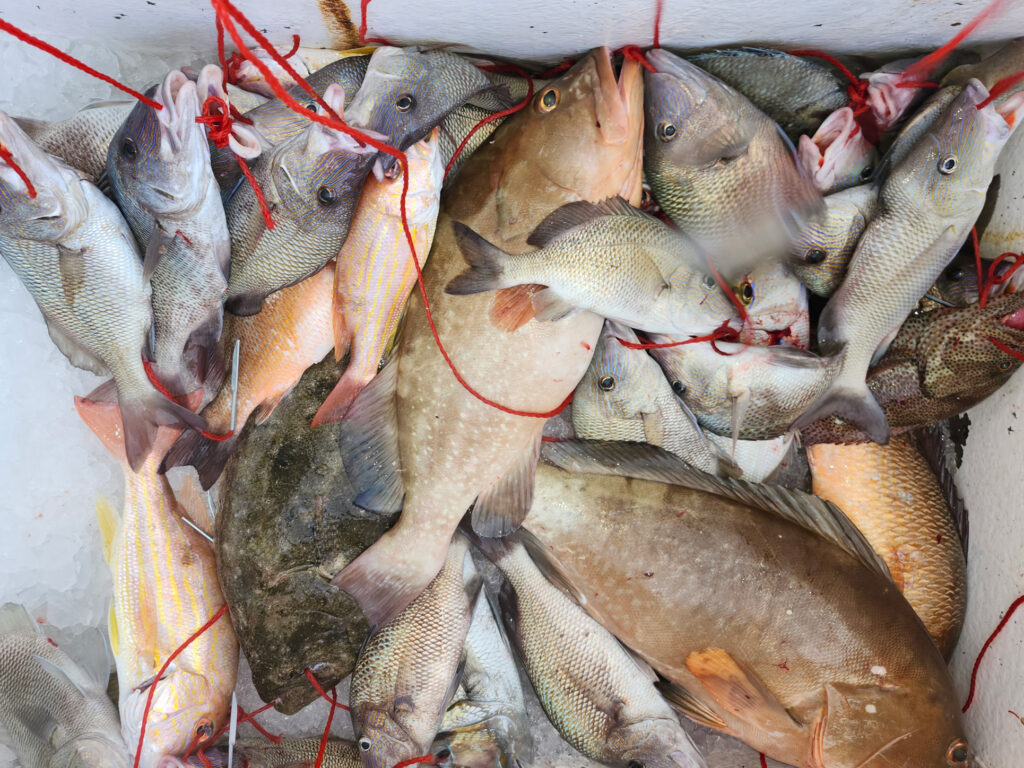
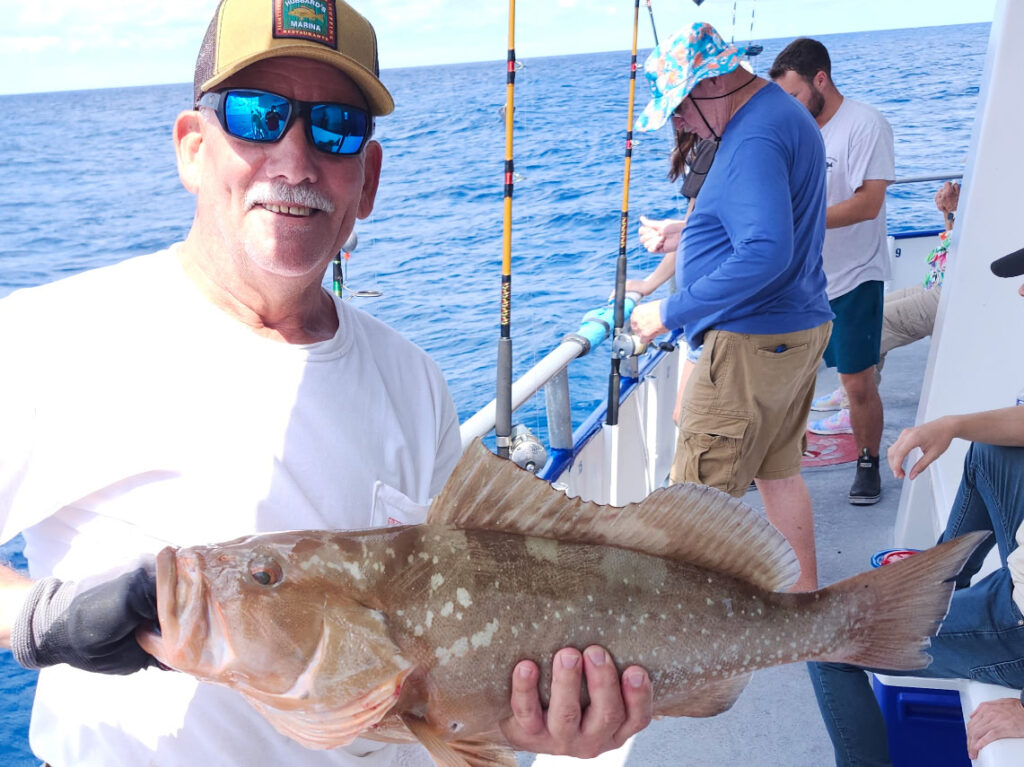
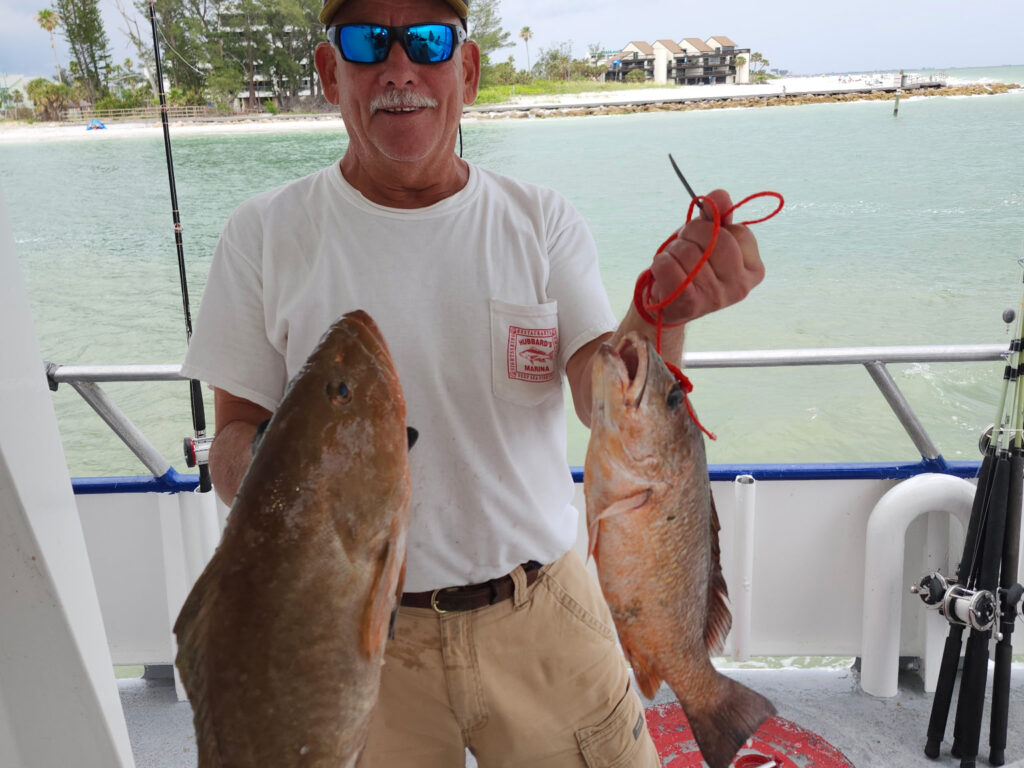
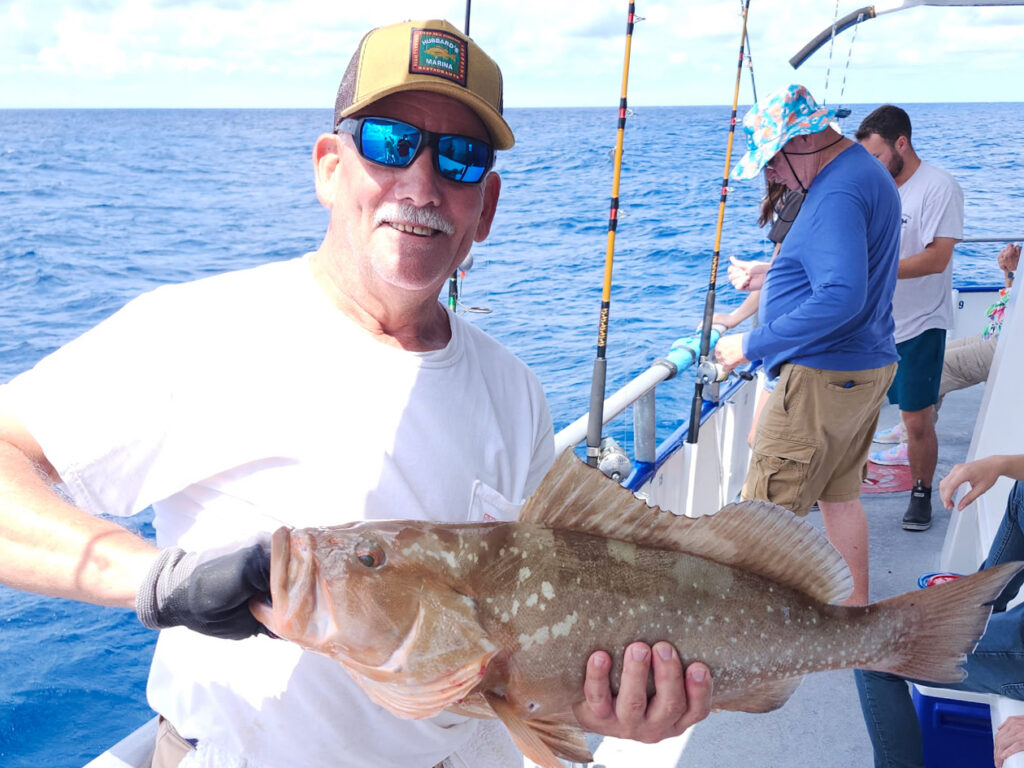
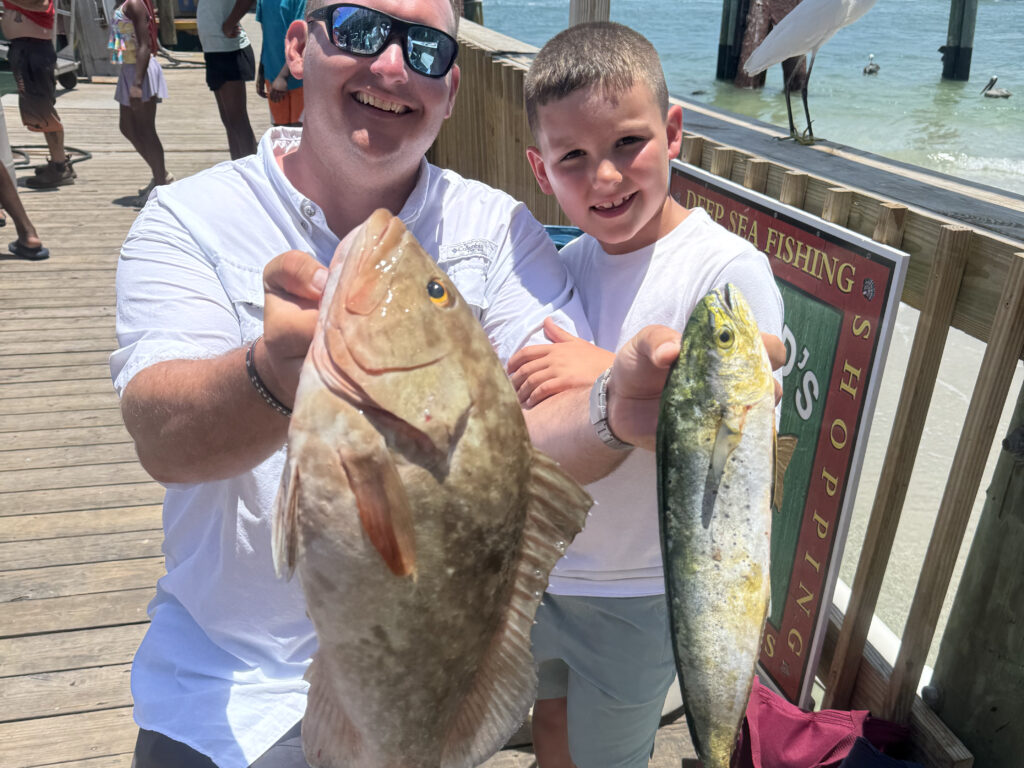
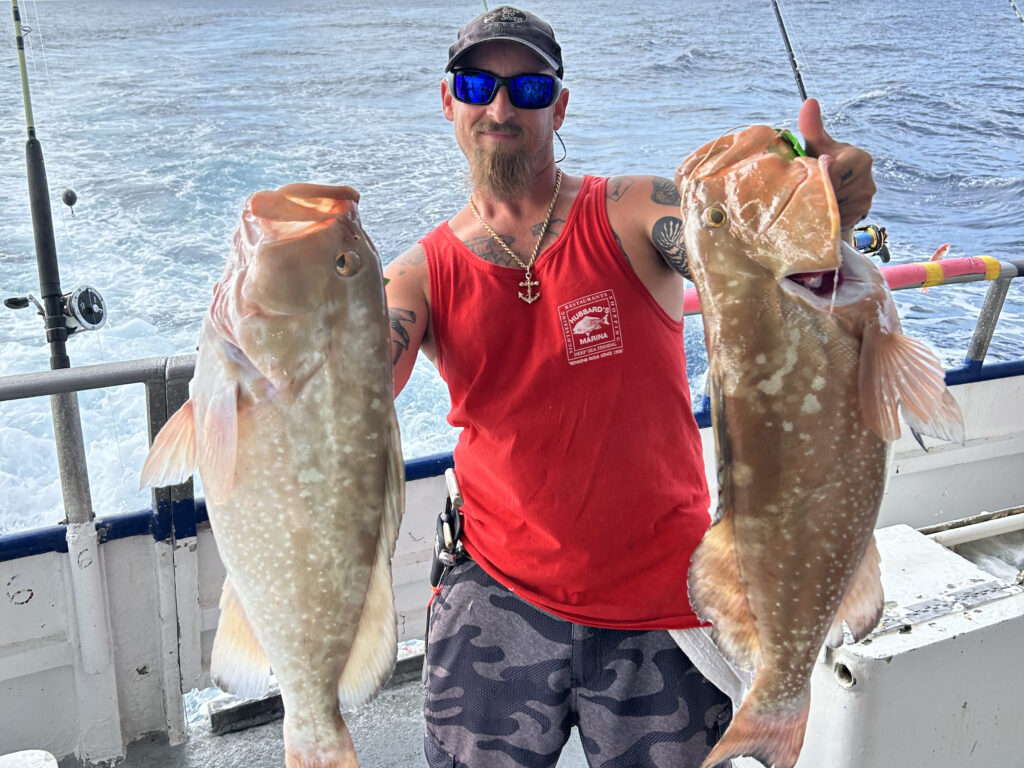
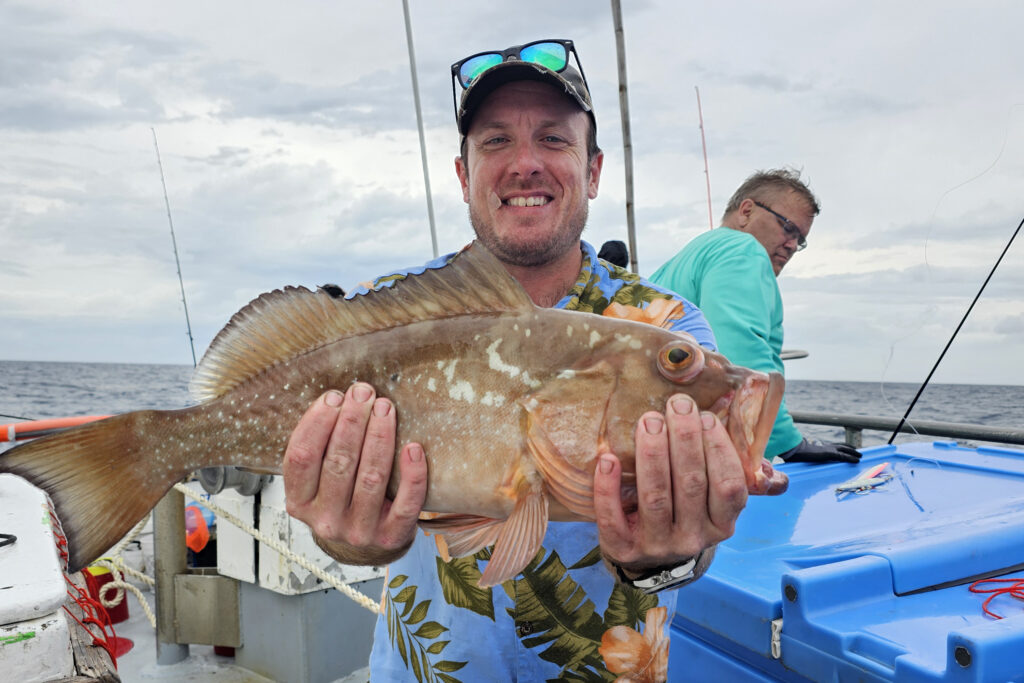
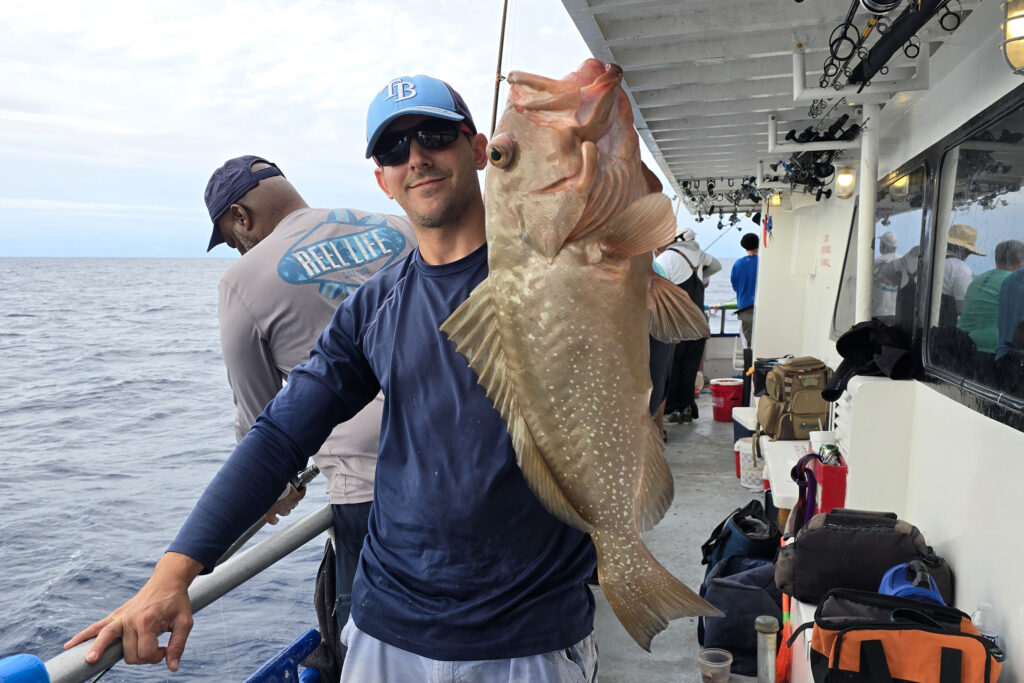
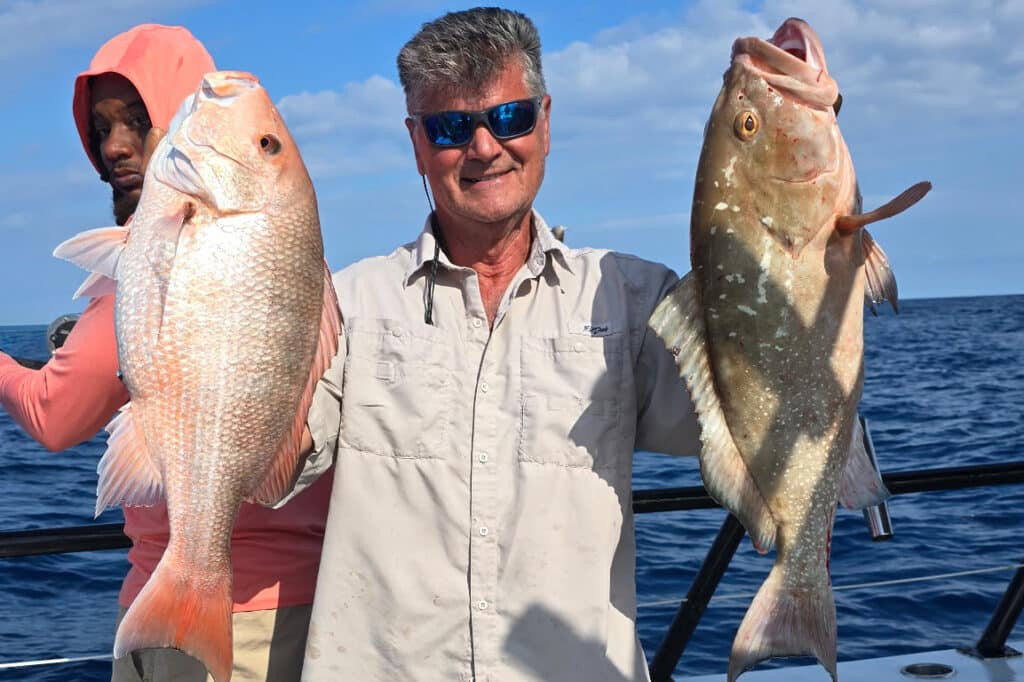
Lane snapper action remains solid in the 60 to 100 ft range with a great mix of size and quantity.
Mangrove snapper are becoming more consistent, especially in deeper nearshore waters approaching that 100 ft mark.
Red grouper are still being caught, though you’ll need to fish deeper and be patient—we’re seeing a few good ones on live and dead baits.
Hogfish have slowed considerably as the water warms, but the occasional fish is still being picked up on lighter tackle and live shrimp.
Mackerel continue to provide fun, fast-paced action near shore, particularly around bait-rich areas along the beach.
Kingfish have mostly moved on with the rise in water temps, but every now and then we’re still seeing one show but mostly offshore.
Fishing Tips
- Red Grouper: Target the deepest near shore waters with big dead baits or solid live baits. Use 60 lb test and 7/0 hooks for best results.
- Red Snapper: Use big dead baits like whole squid and bonita strips with heavy tackle to focus on larger fish. Prime trips include the 12-hour extreme, 39-hour, and 44-hour trips.
- Scamp Grouper: Use small to medium pinfish and cut threadfin, especially while targeting mangrove snapper.
- Mangrove Snapper: Near shore, use live shrimp and small chunks of threadfin on 30-40 lb test with 3-4/0 hooks. Offshore, use bigger chunks of cut threadfin or medium pinfish on 40-60 lb test with 5-7/0 hooks.
- Vermillion Snapper: Start around 100 feet of water using cut squid or threadfin. These fish are aggressive and not leader-shy.
- Yellowtail Snapper: Use shrimp, cut squid, and threadfin.
- Pelagic Species: Keep flat lines and pitch rods ready for sailfish, kingfish, wahoo, tuna, and mahi mahi.
Offshore Fishing Report
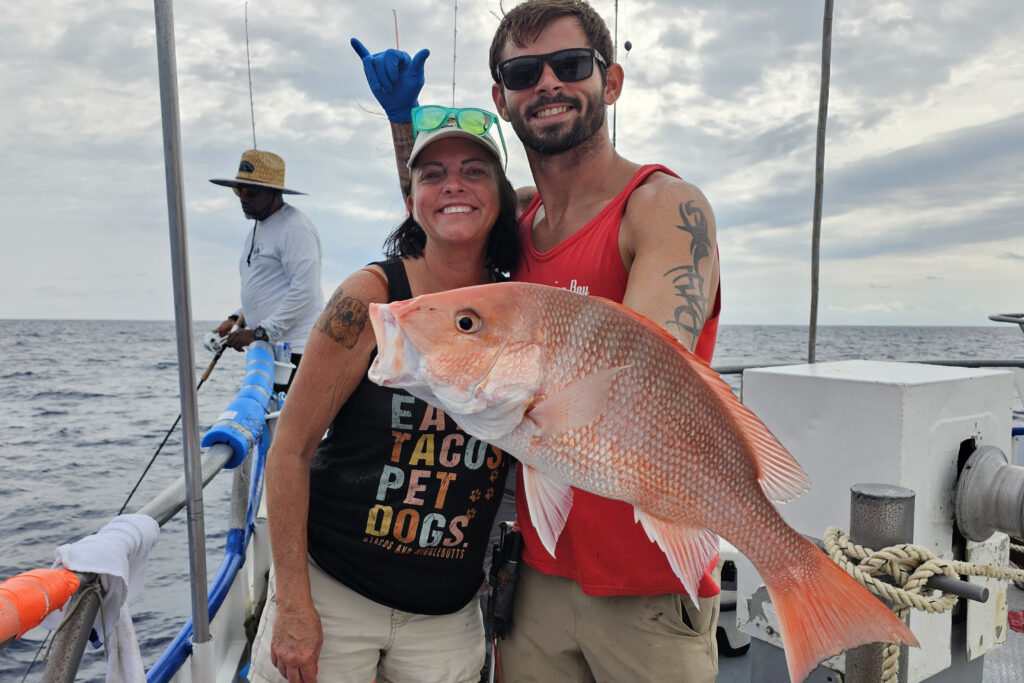
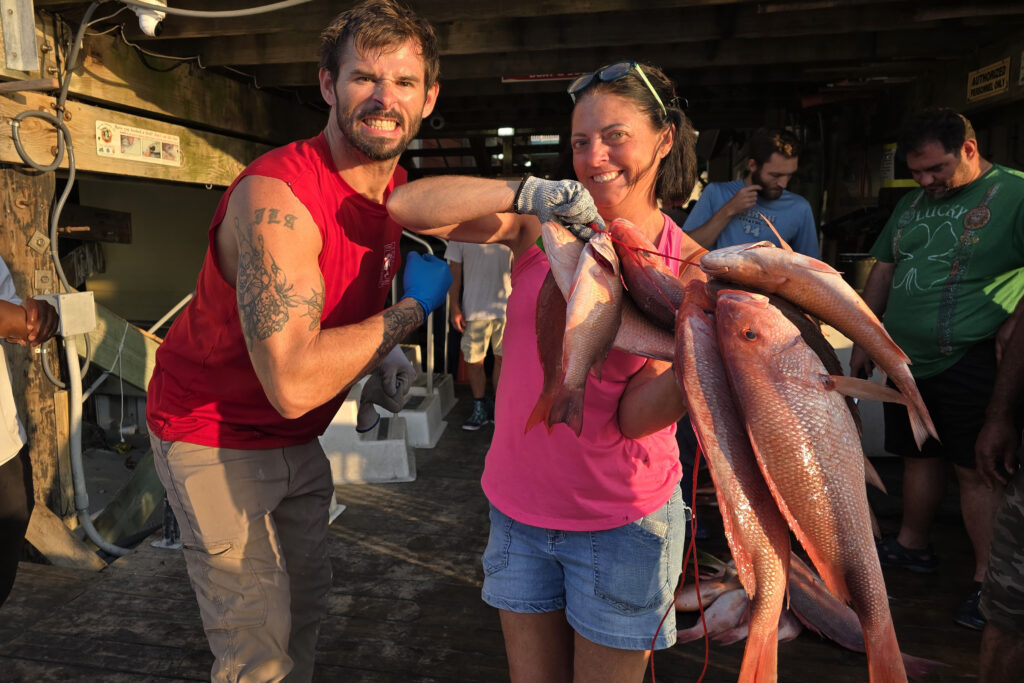
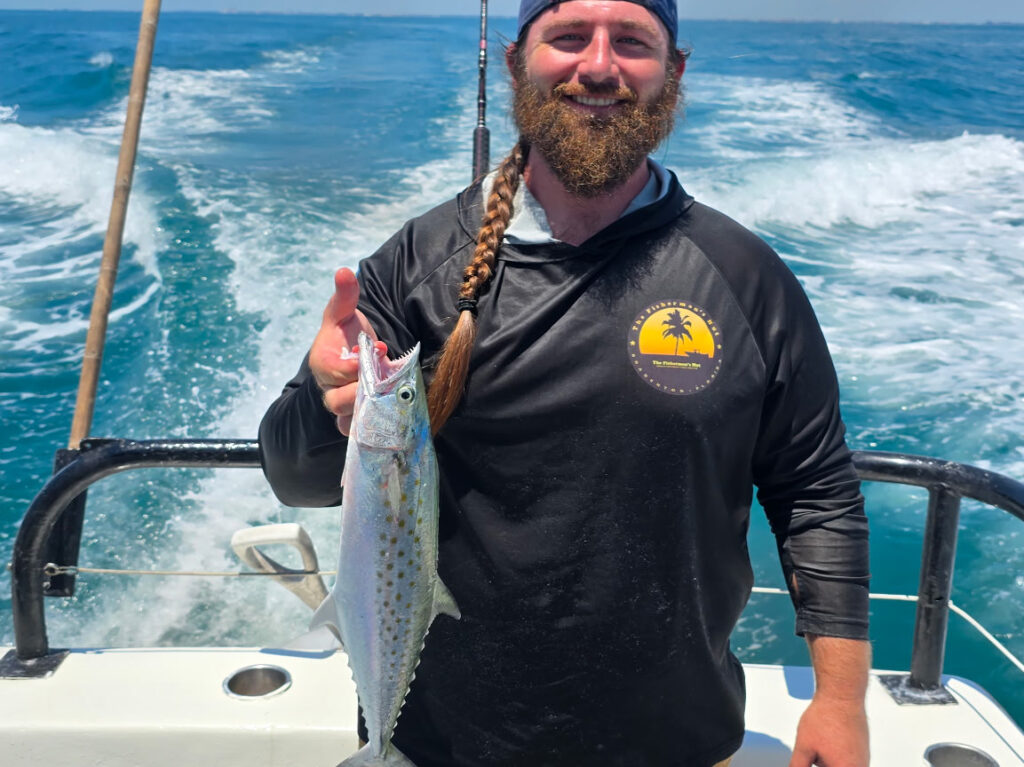
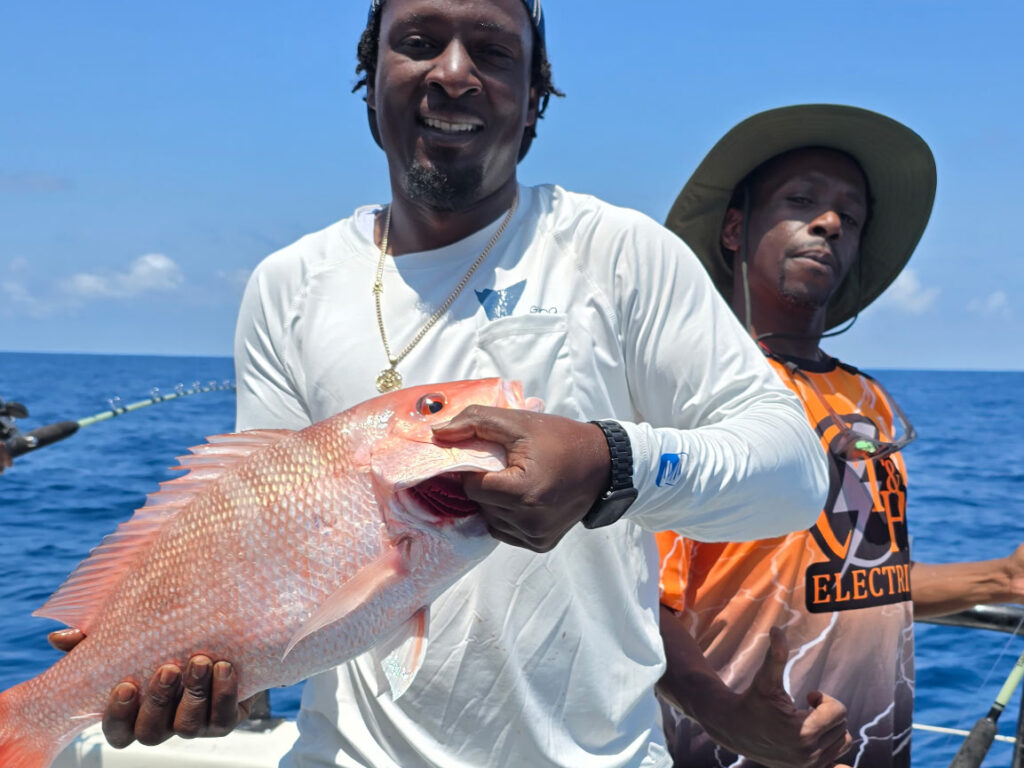
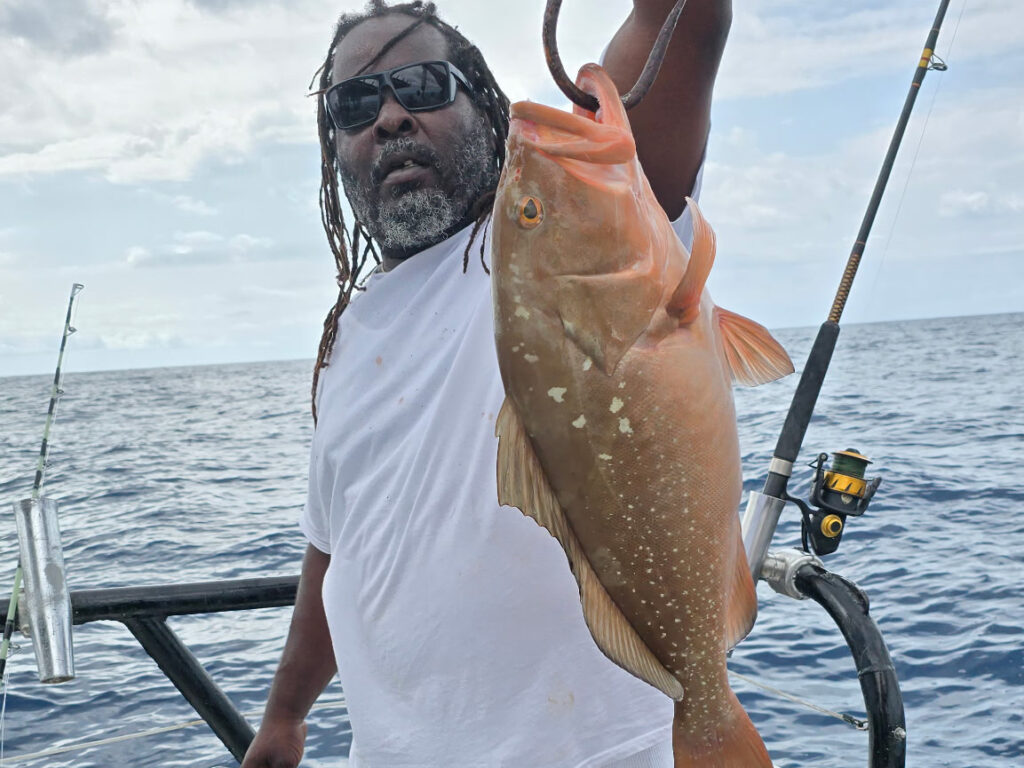

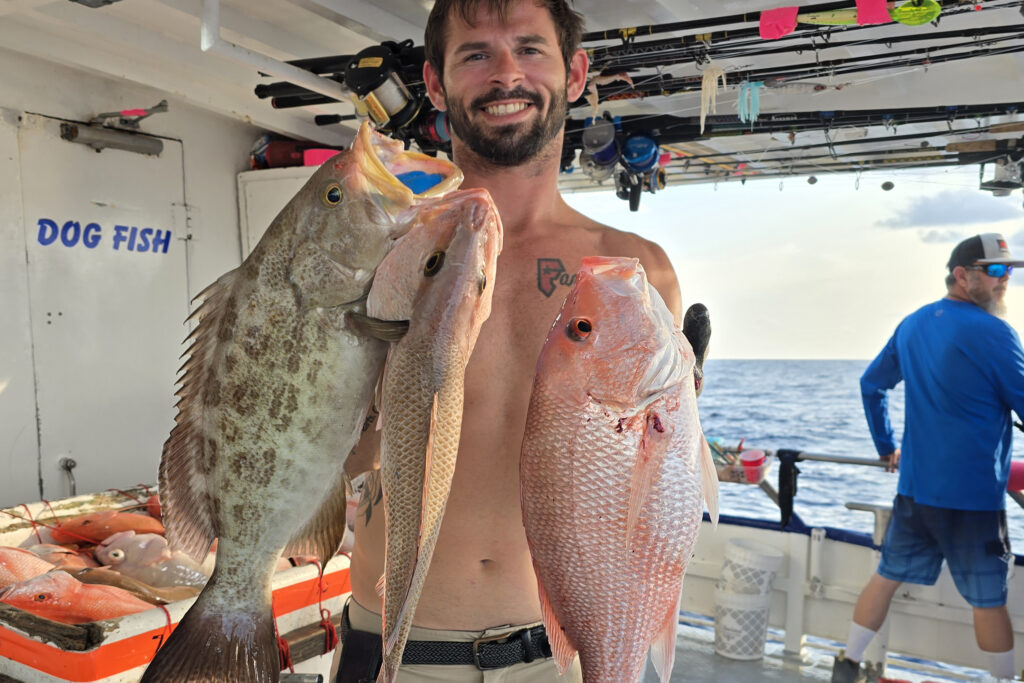
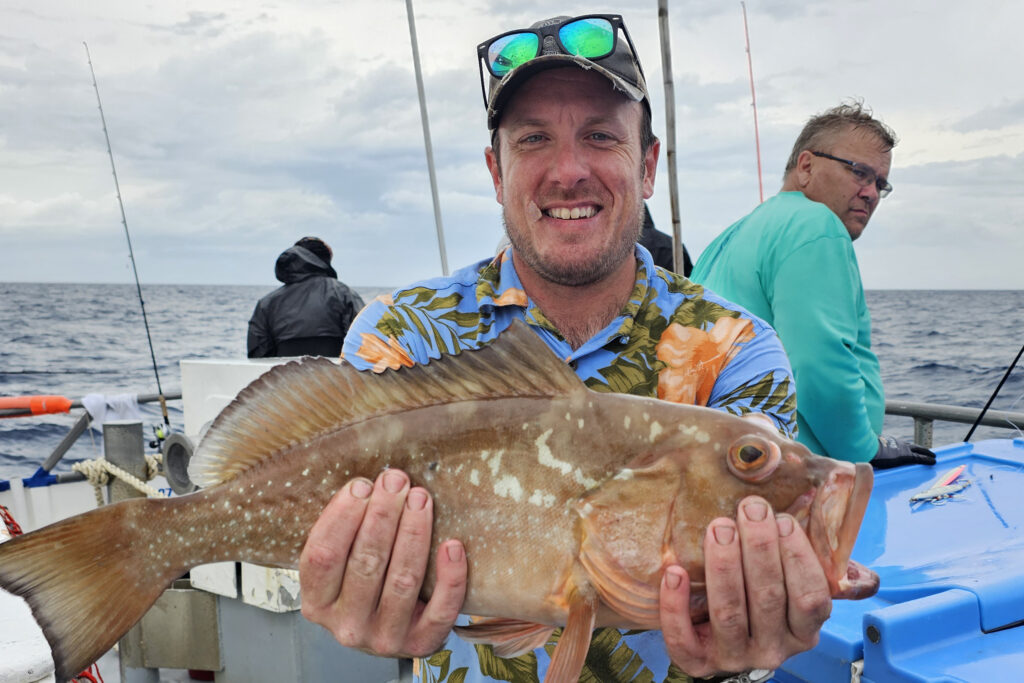
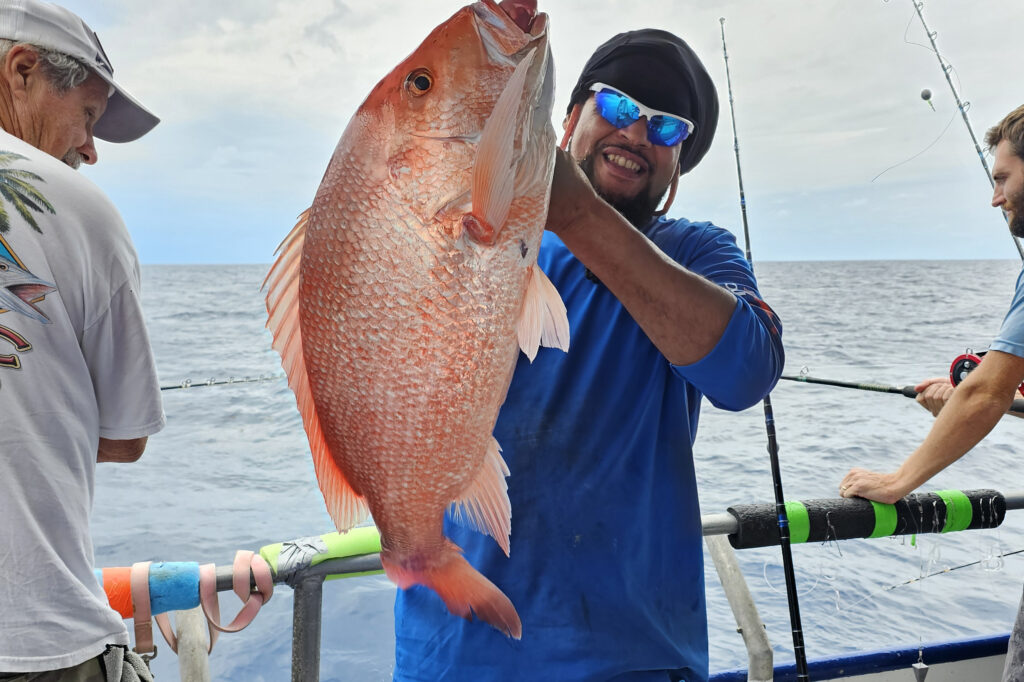
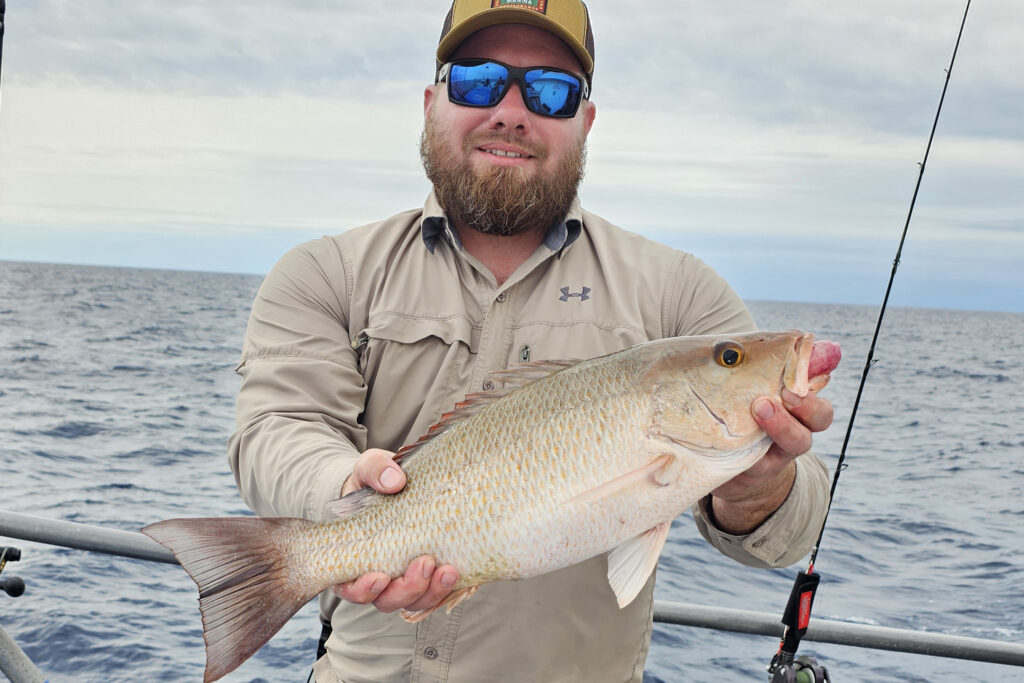
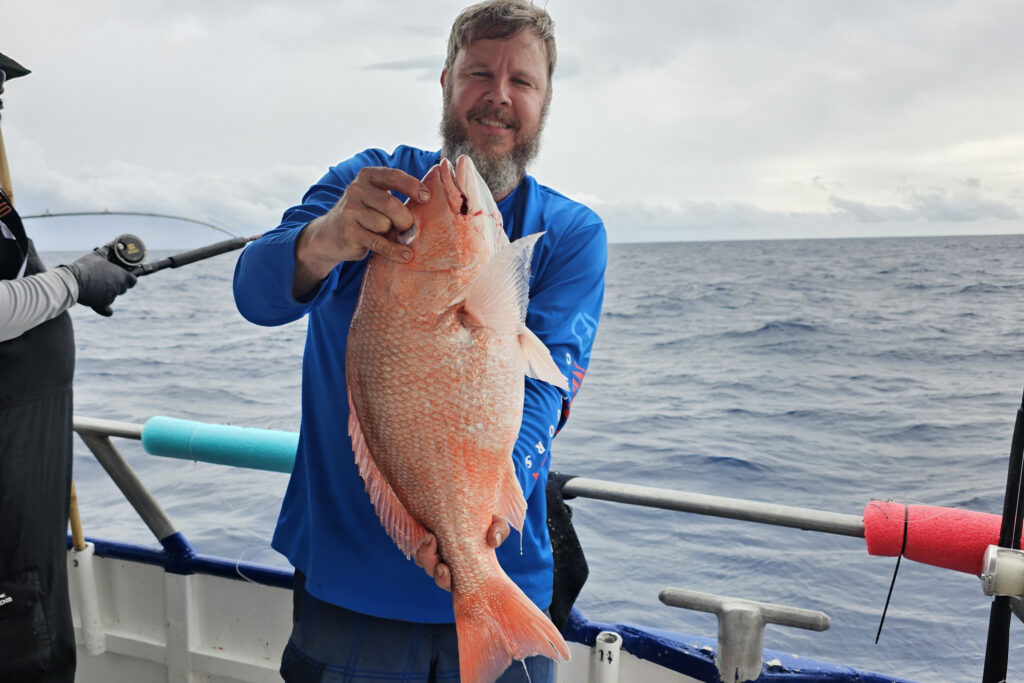
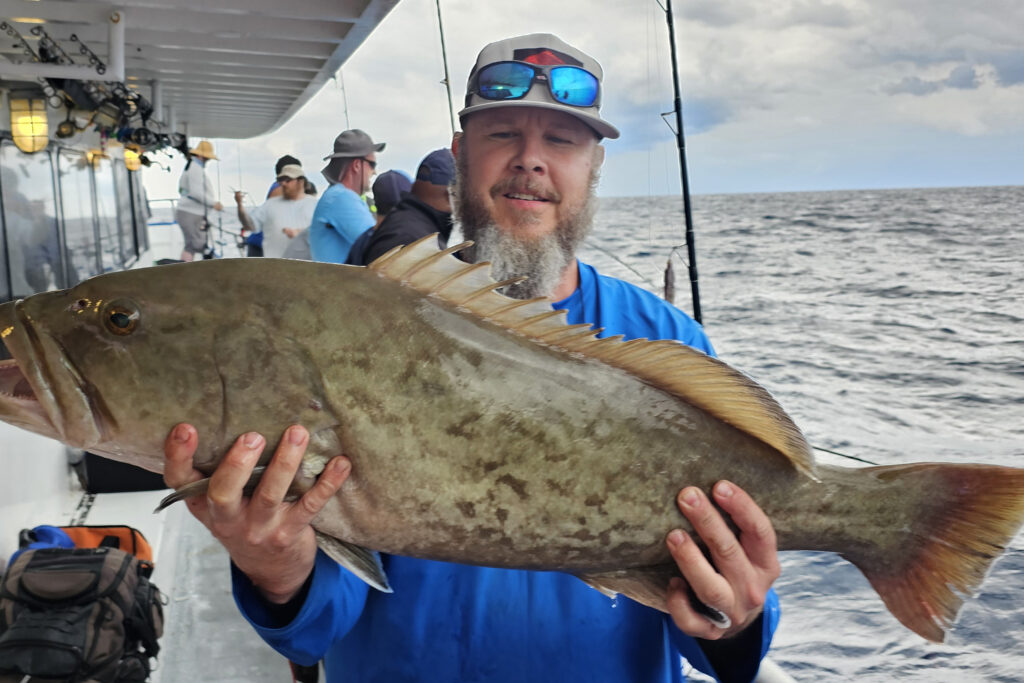
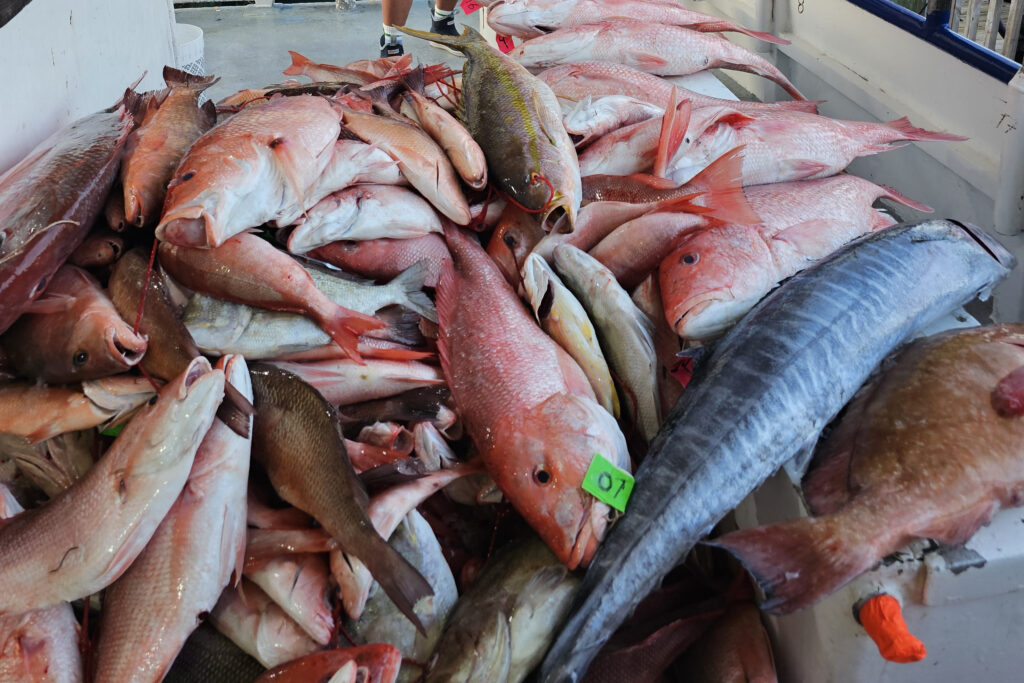
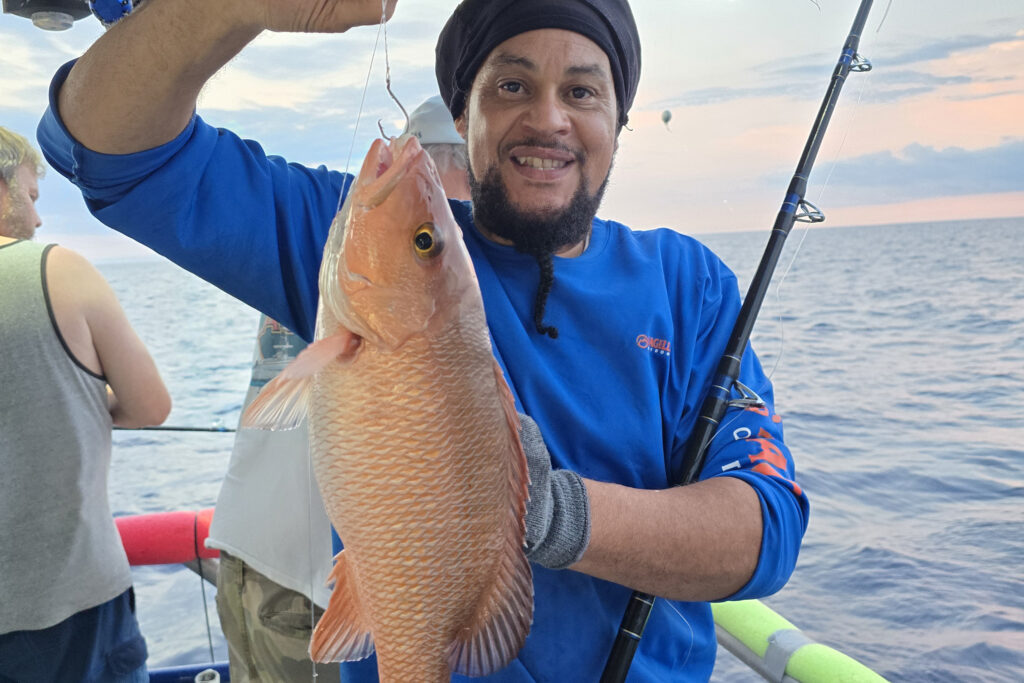
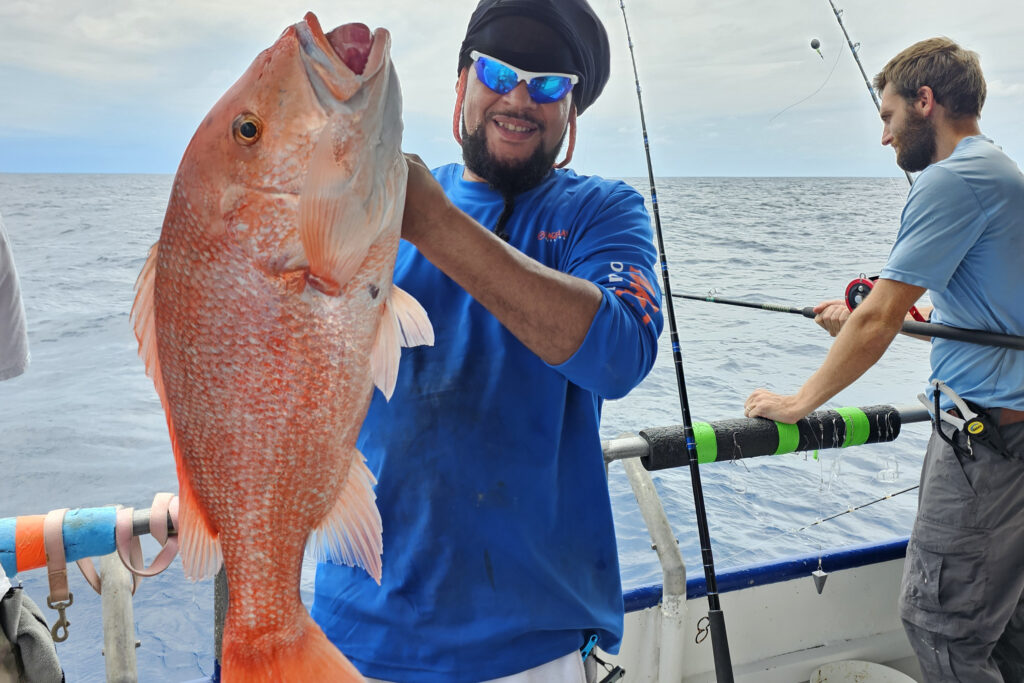

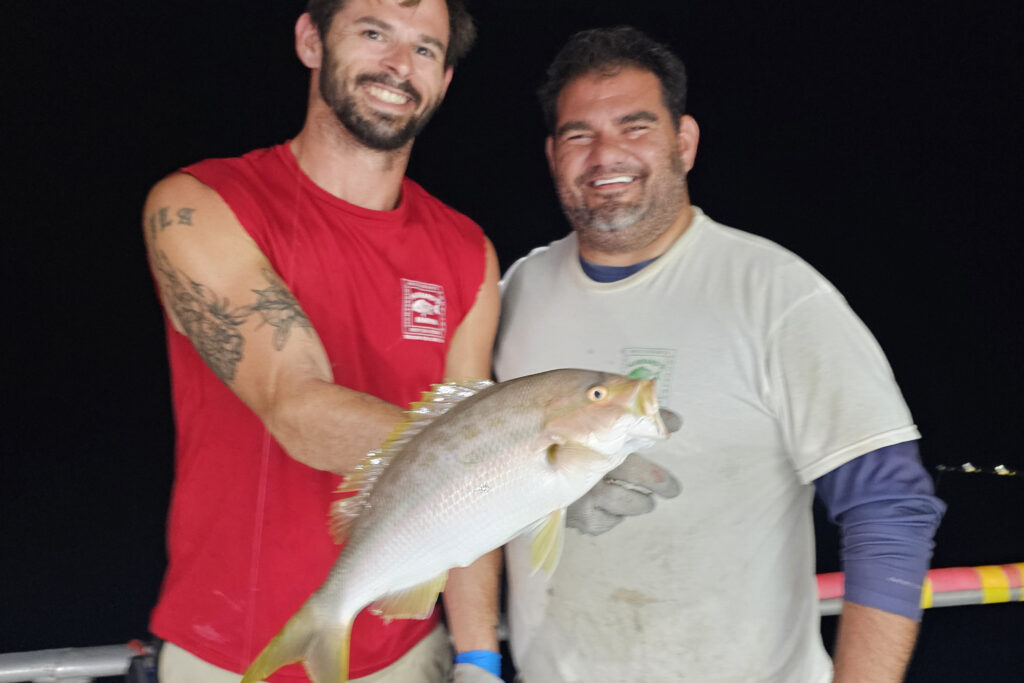
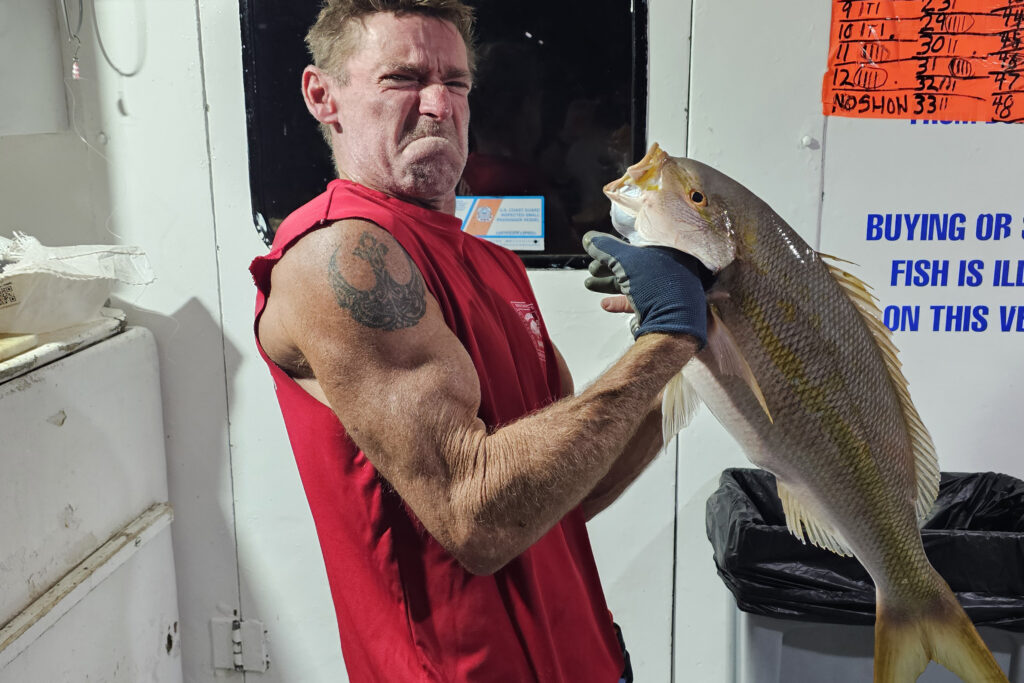
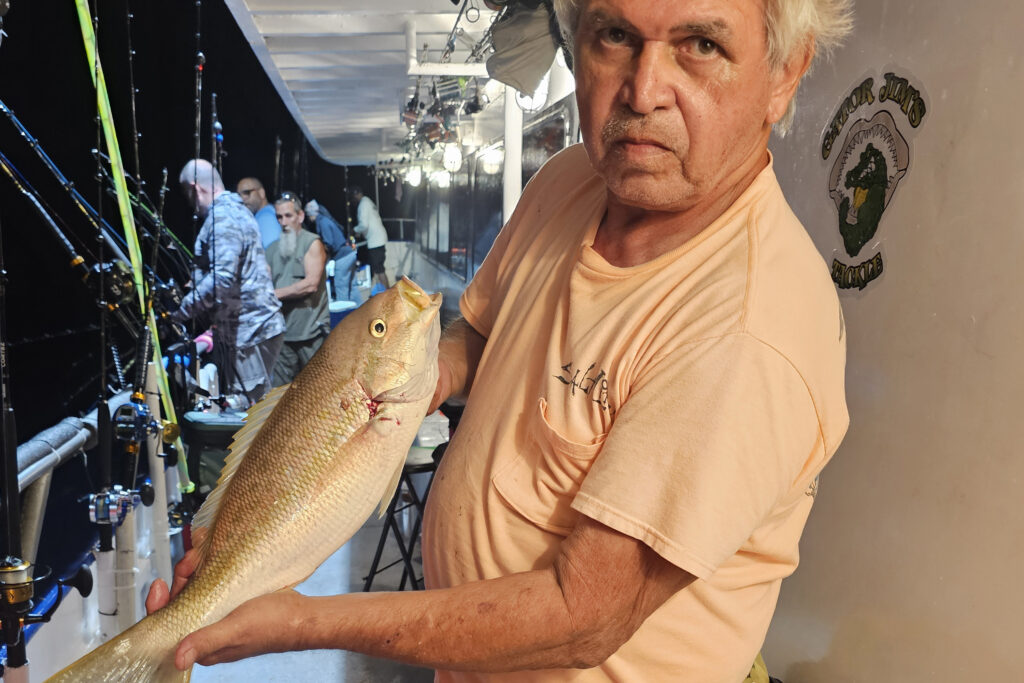
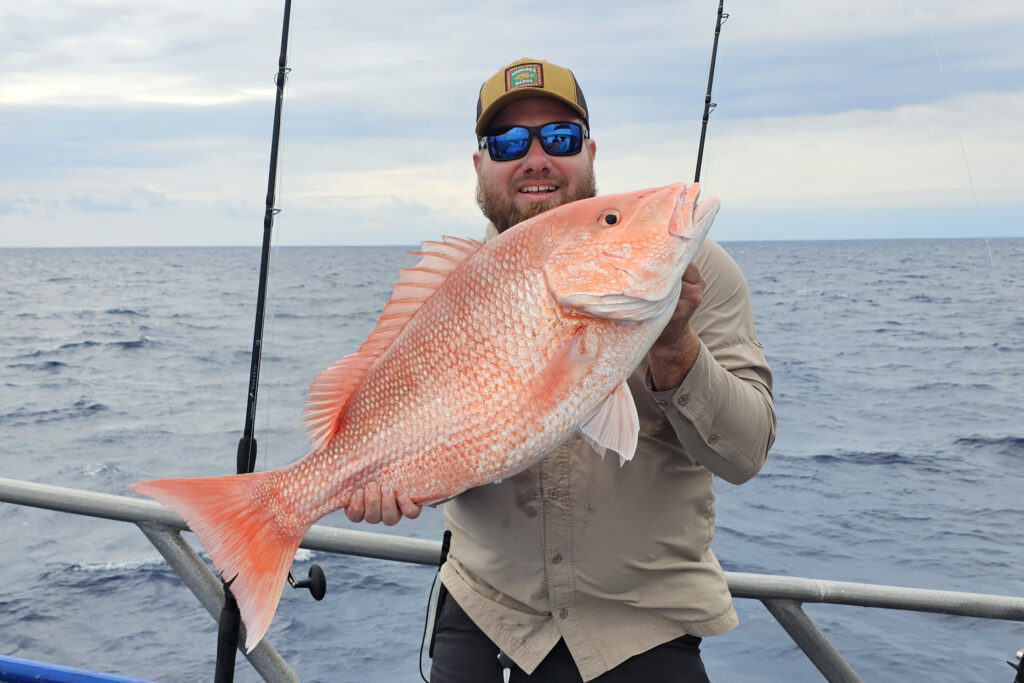
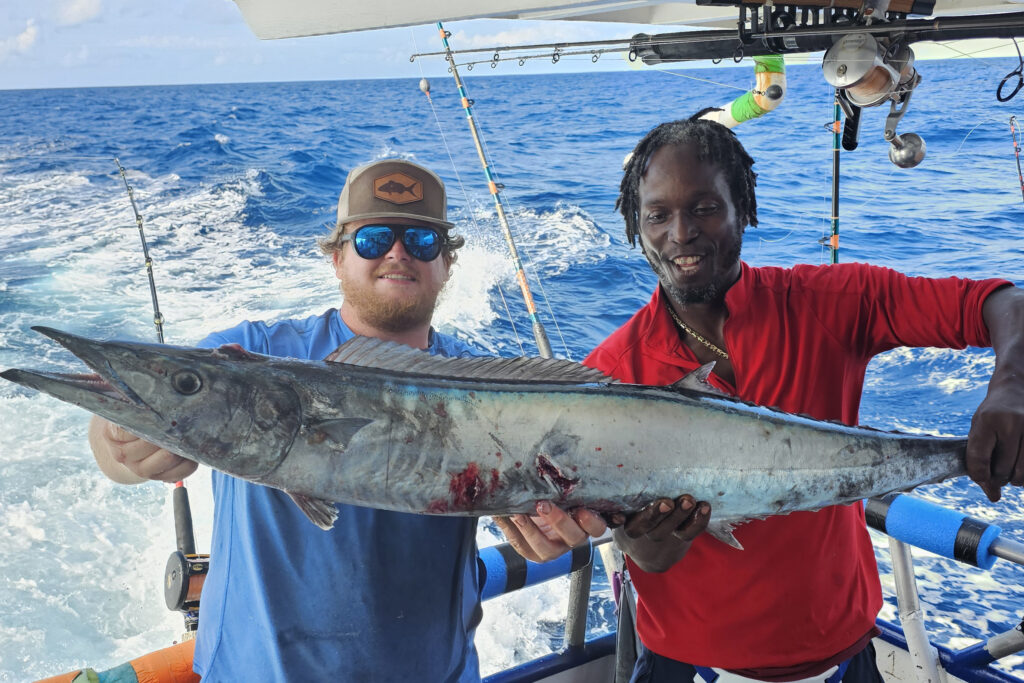
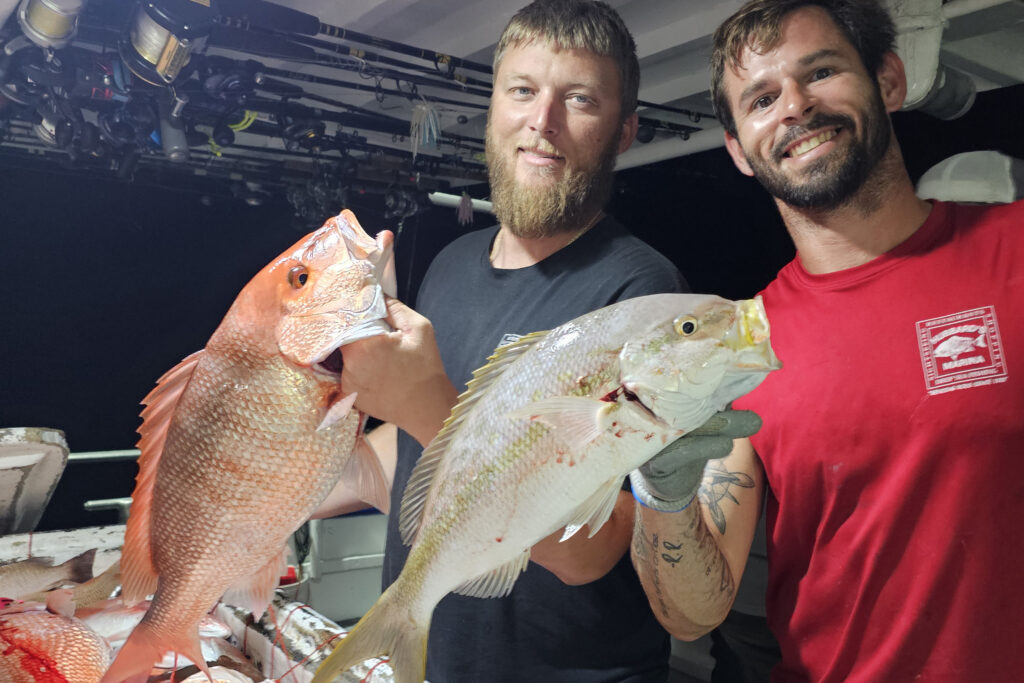
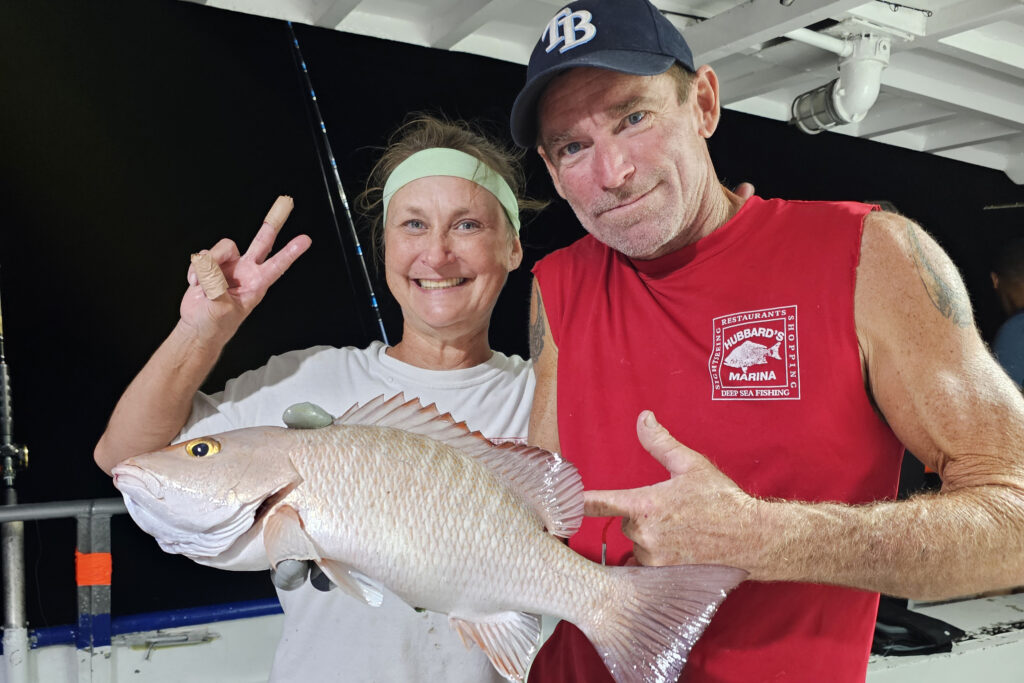
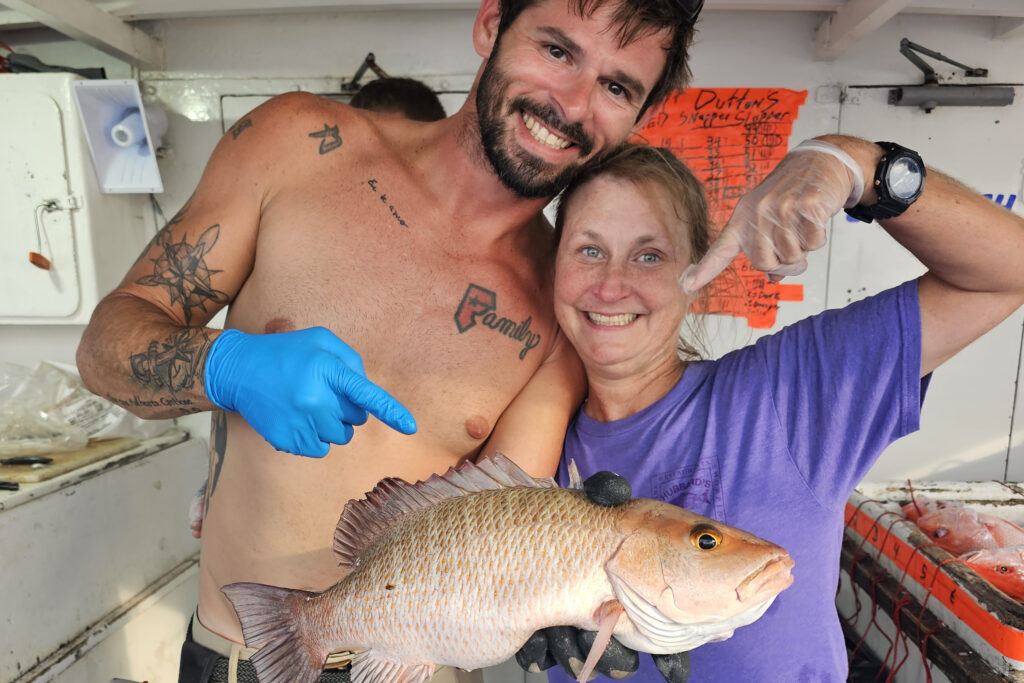
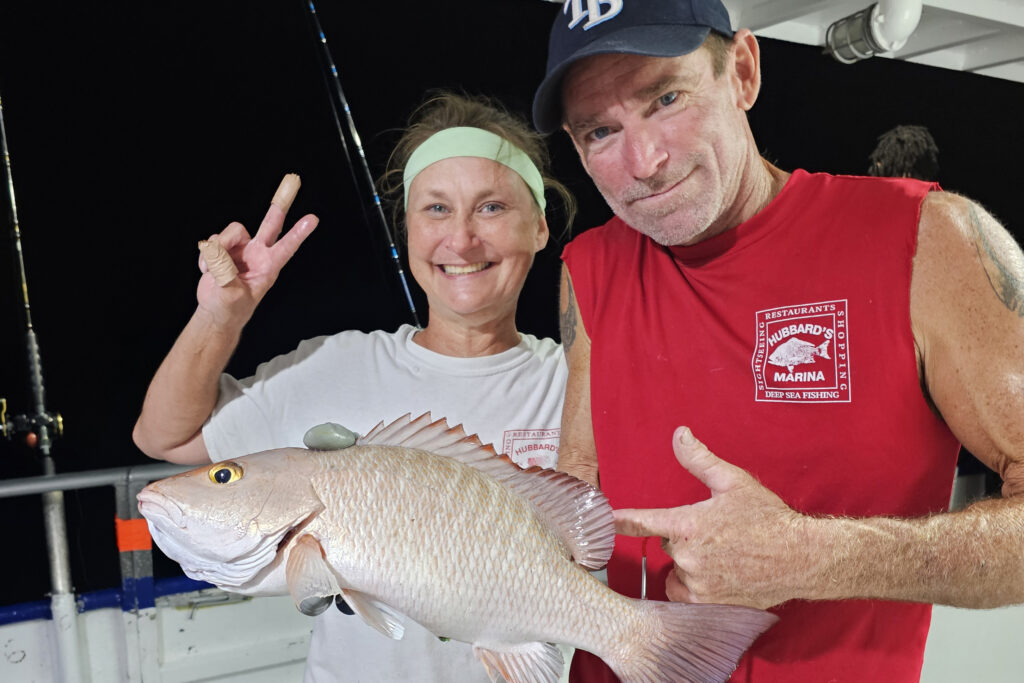
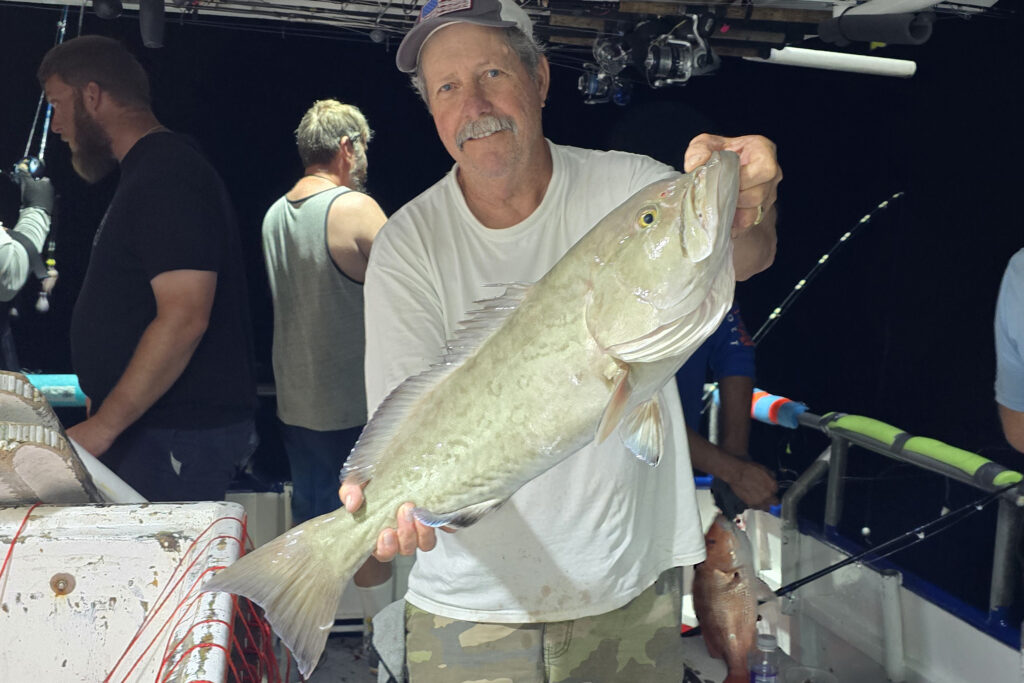
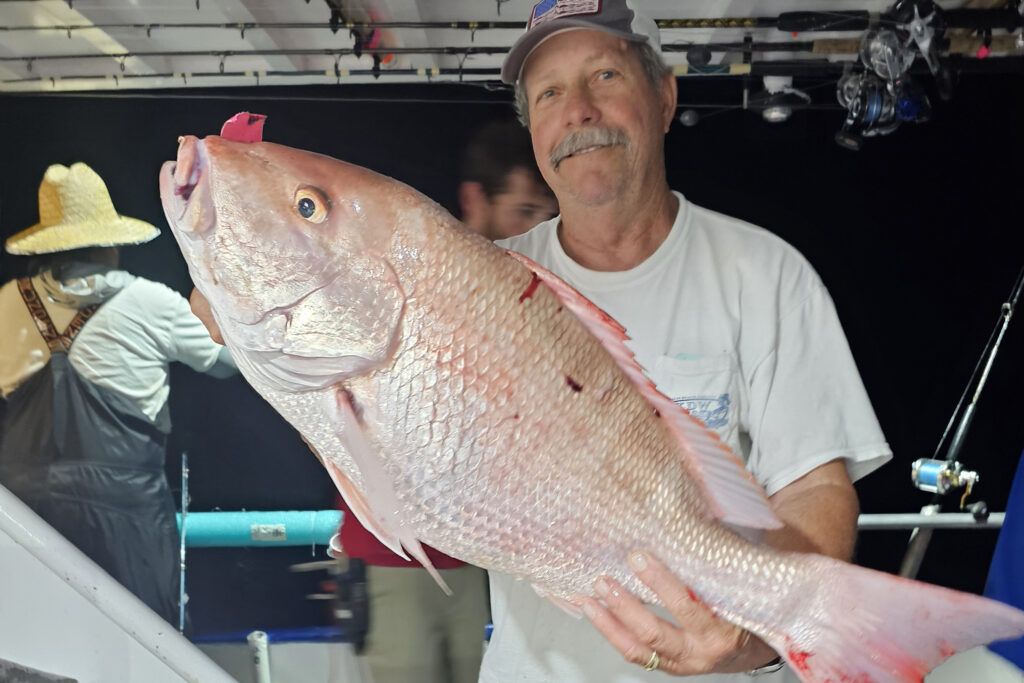
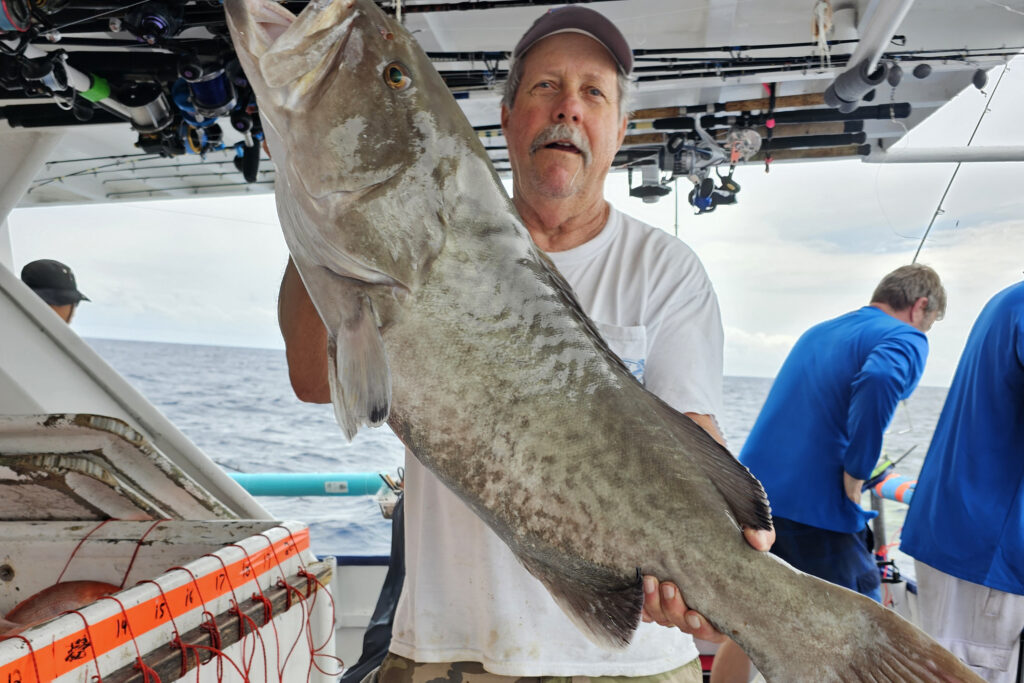
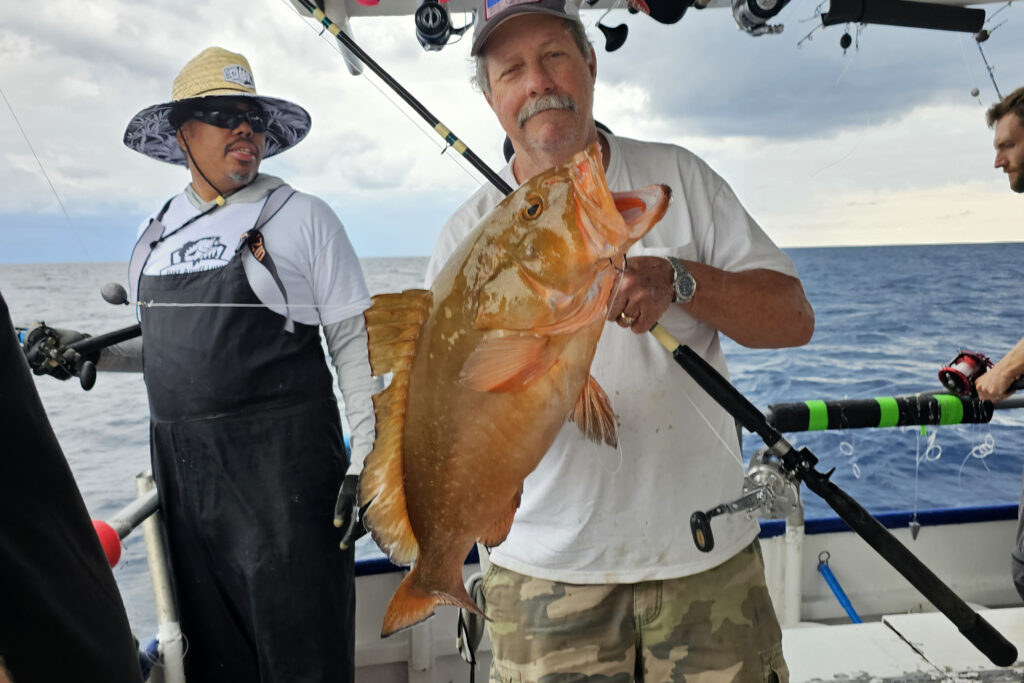
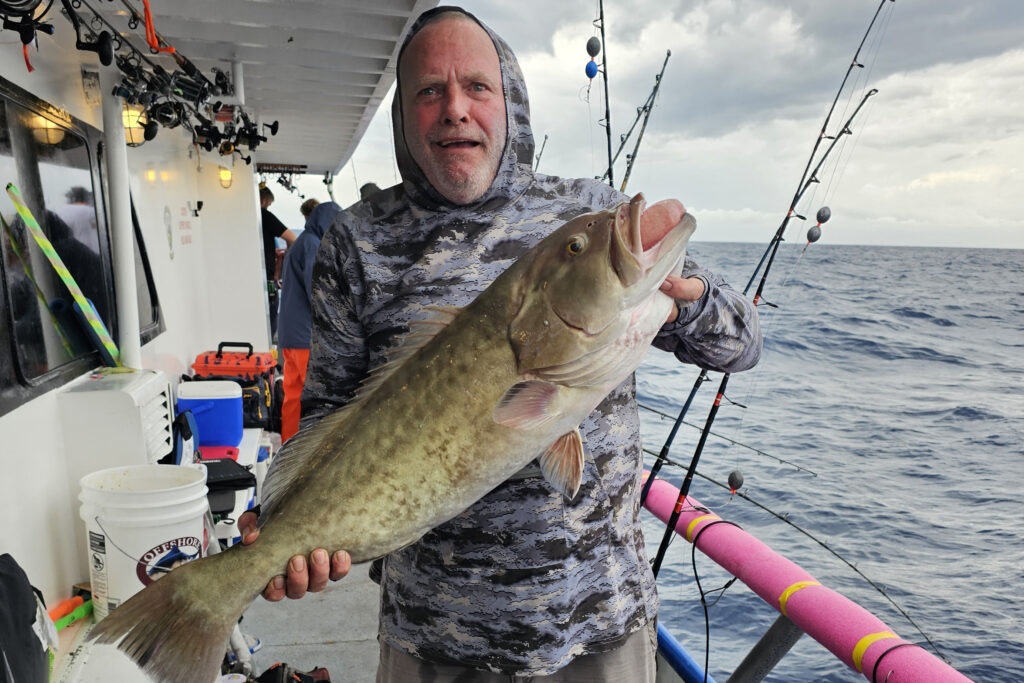
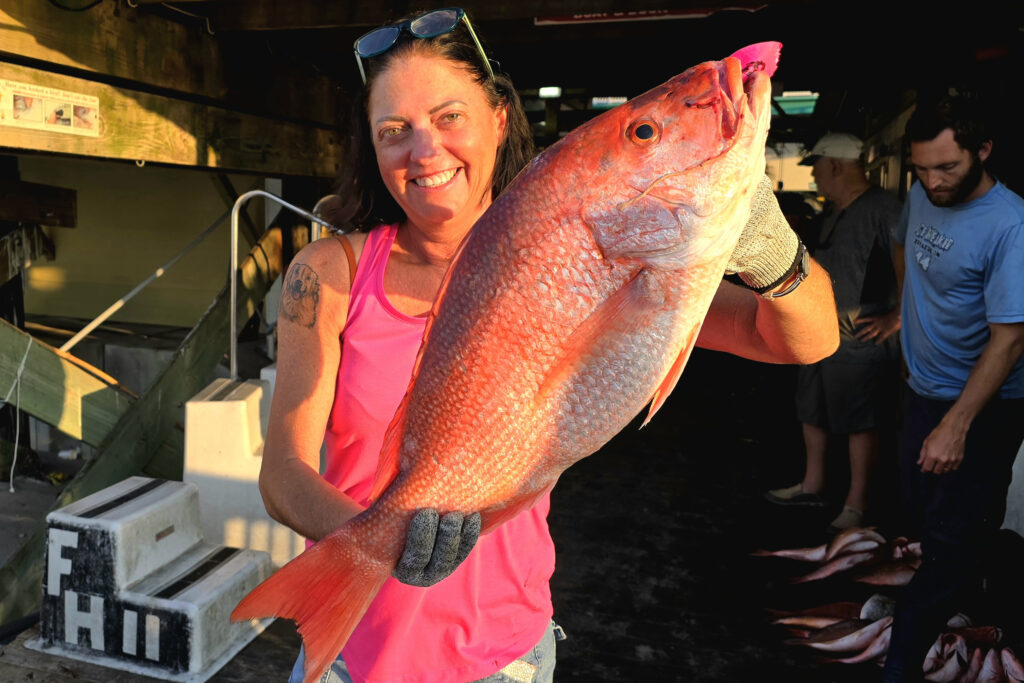
Red snapper season has officially kicked off, and the bite is already heating up! We’re finding great numbers starting around 120 ft, but the bigger fish are holding deeper between 140 and 180 ft. They’ll hit a wide range of baits, but the largest snapper are coming on whole threadfin, big chunks of cut bait like bonita, and big live baits.
Triggerfish are now closed for June and July, so we’ll be releasing any caught in the coming trips. Red grouper remain open and are producing solid catches for us offshore.
We’re also seeing some incredible yellowtail snapper in the mix—many of them quality size and aggressive on squid strips and light tackle.
Mangrove snapper are steady offshore and will only improve through summer.
Scamp grouper are becoming more frequent as we fish deeper chasing red snapper.
The pelagic action is holding strong with blackfin tuna, a few wahoo, and consistent kingfish coming in while trolling or flat-lining between bottom drops.
Remember that when fishing in deeper nearshore and offshore federal waters, the Descend Act requires you to have a descending device or venting tool “rigged and ready.” If you know how to use a venting tool, keep it prepared. If not, here’s some helpful advice: https://bit.ly/3L5HTnv. Using a descending device is straightforward and doesn’t require as much precision or practice as venting. You can even get over $100 worth of descending device gear for free by taking a short course on barotrauma mitigation, which helps more fish survive. The course only takes about 10-15 minutes, and you can learn valuable techniques to protect our offshore fishery. Spread the word by visiting: https://returnemright.org/.
TERMS OF REFERENCE-
Inshore: This covers the areas from the inner bays, through the bridges, and right up to the beaches.
Near Shore: This includes the coastal waters from the beaches up to twenty miles offshore, or up to a depth of 100 feet.
Offshore: This extends from twenty miles offshore or from a depth of 100 feet and beyond.
For more fishing reports, photos, videos, and other content, check out Hubbard’s Marina on Facebook, Instagram, YouTube, TikTok, Twitter, Pinterest, or Snapchat by searching for @HubbardsMarina. Remember our family motto: “If you’re too busy to go fishing, you’re just too busy!” Thank you for reading our report.
Capt. Dylan Hubbard, Hubbard’s Marina
Phone or text: (727) 393-1947
Website: Hubbard’s Marina

